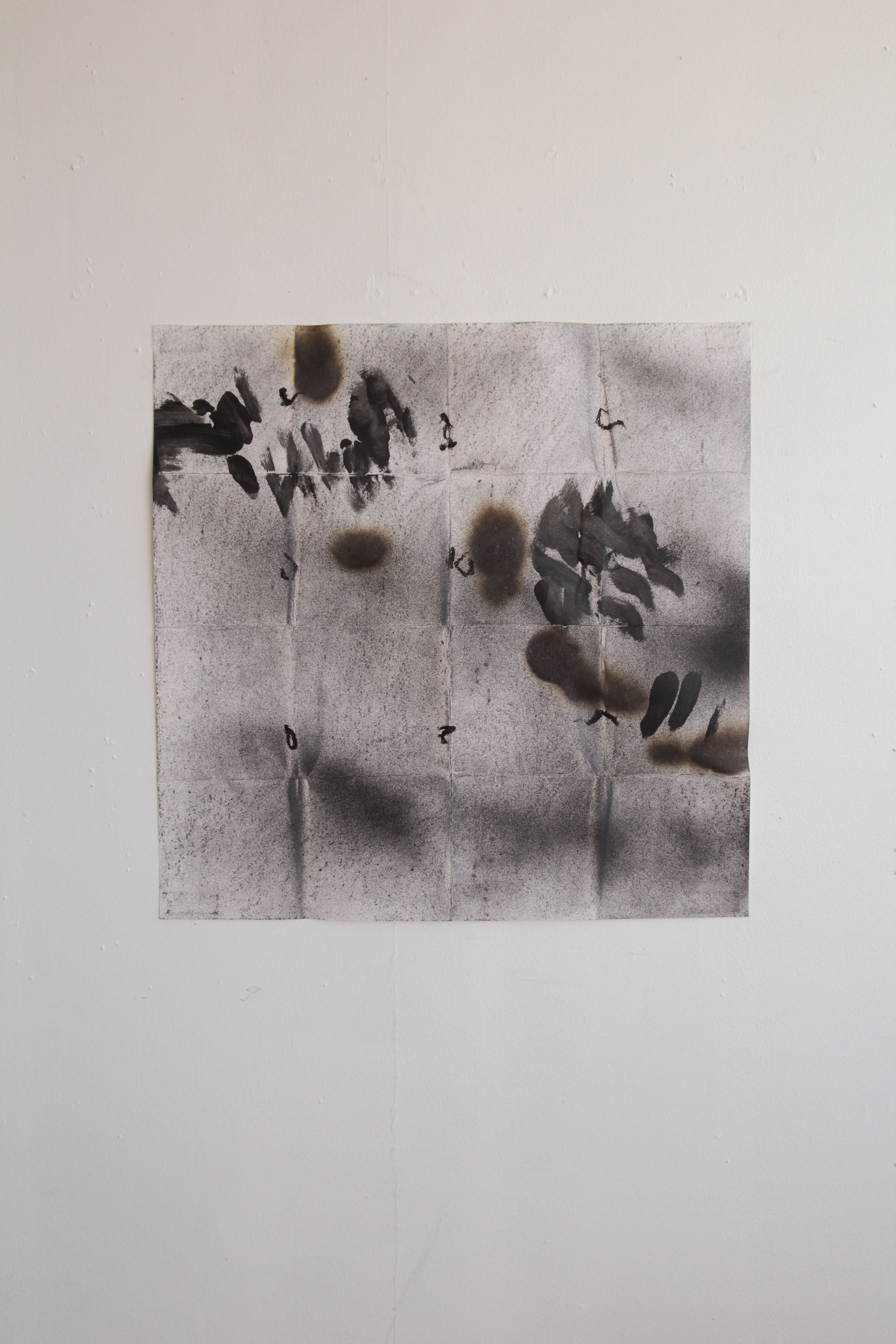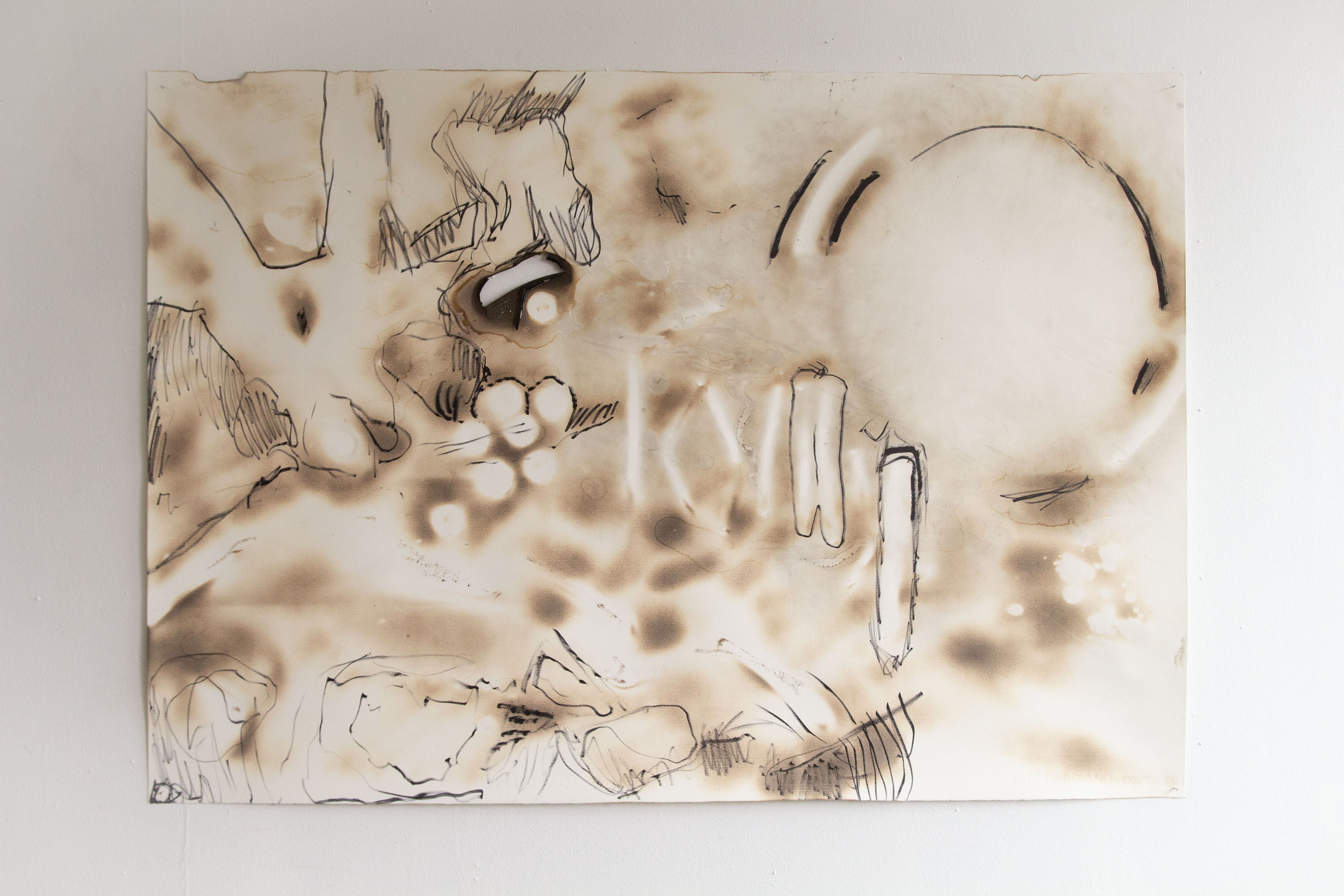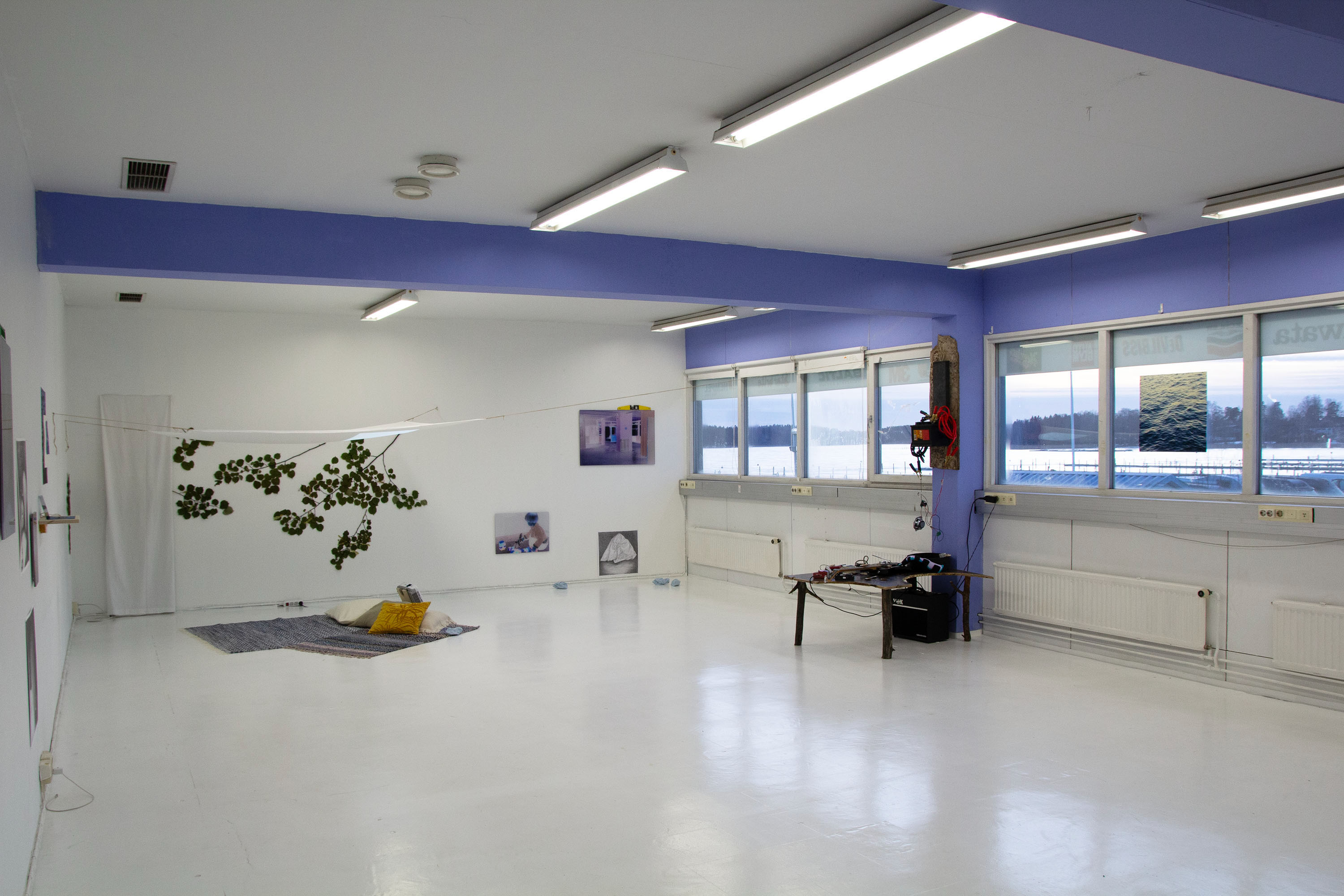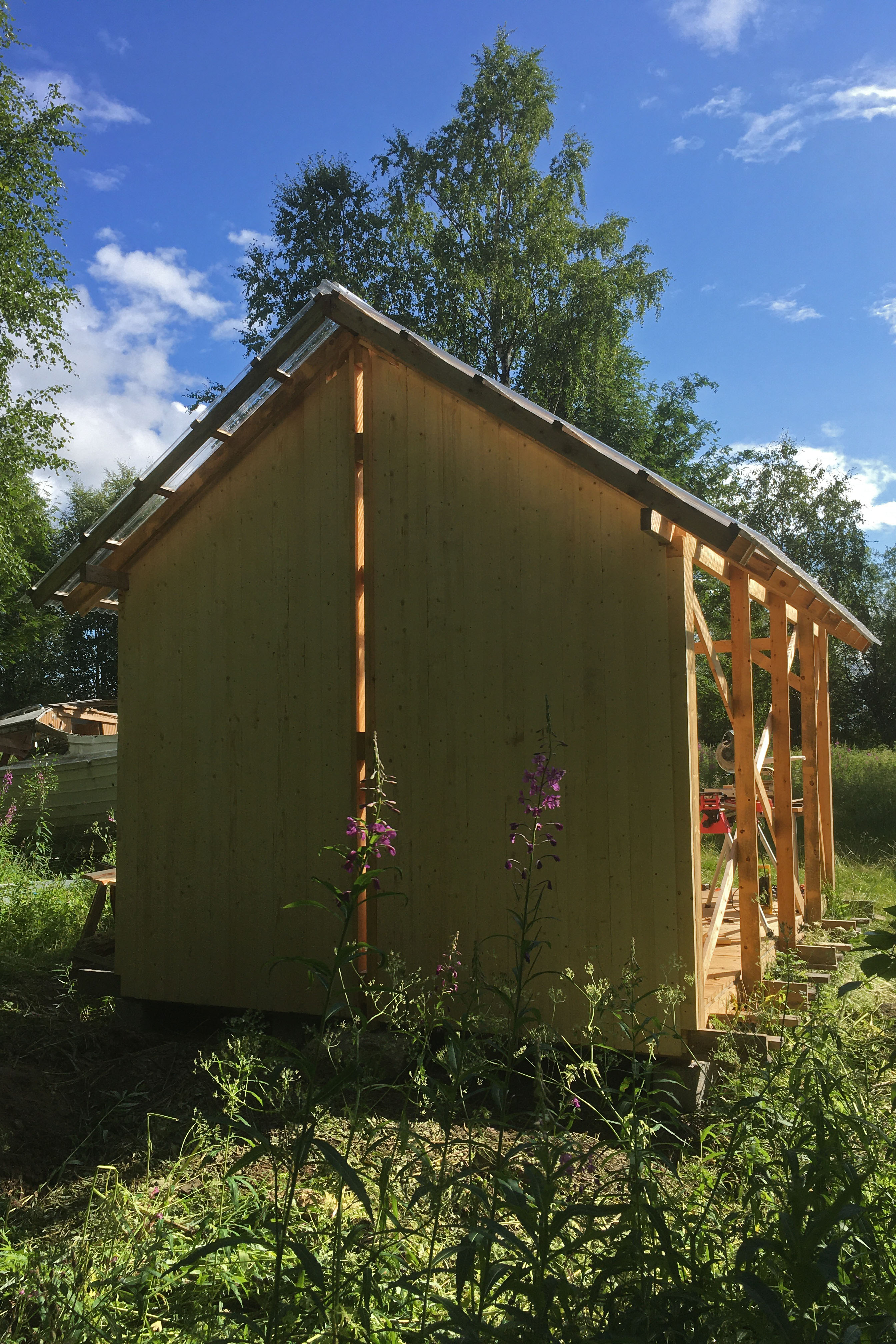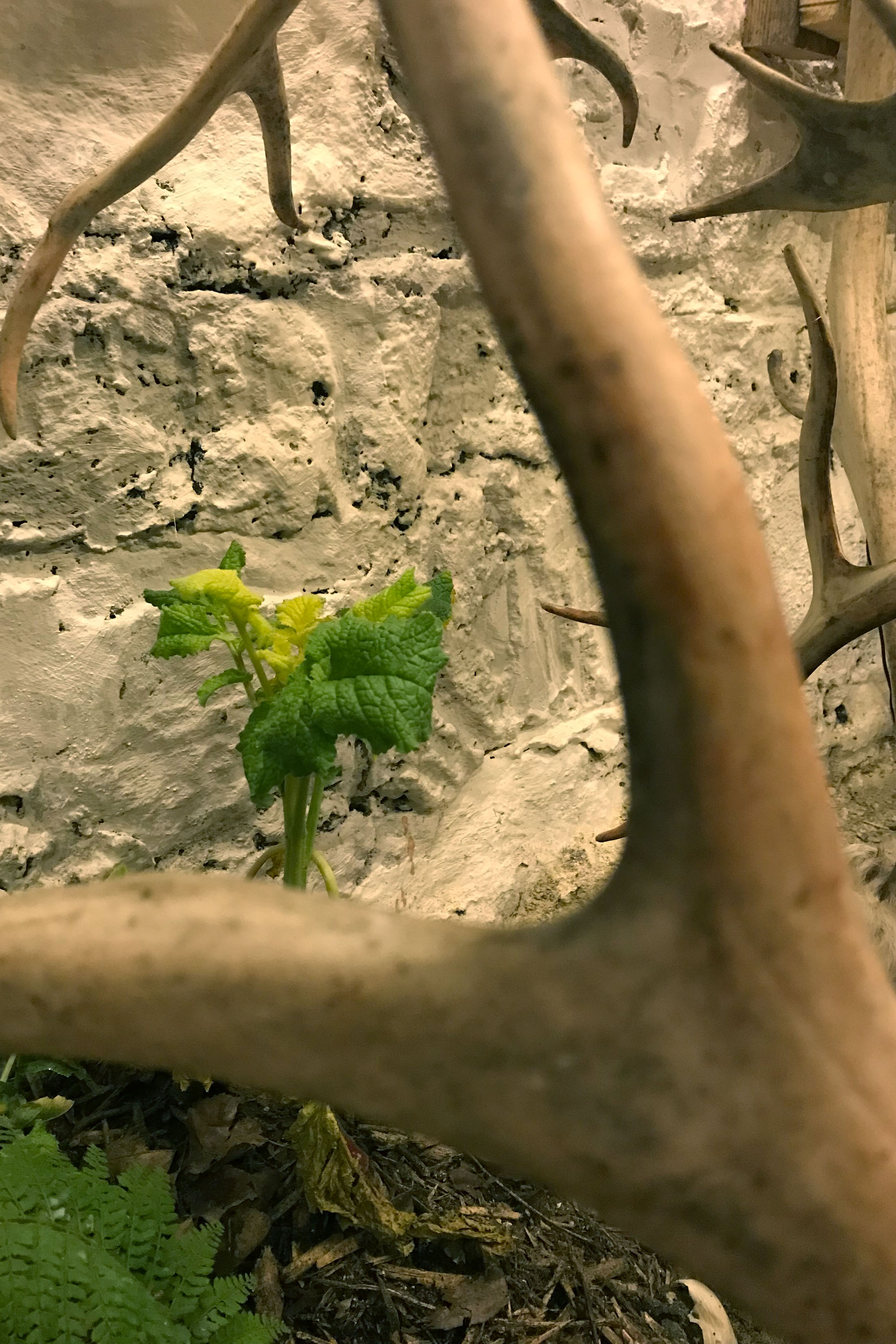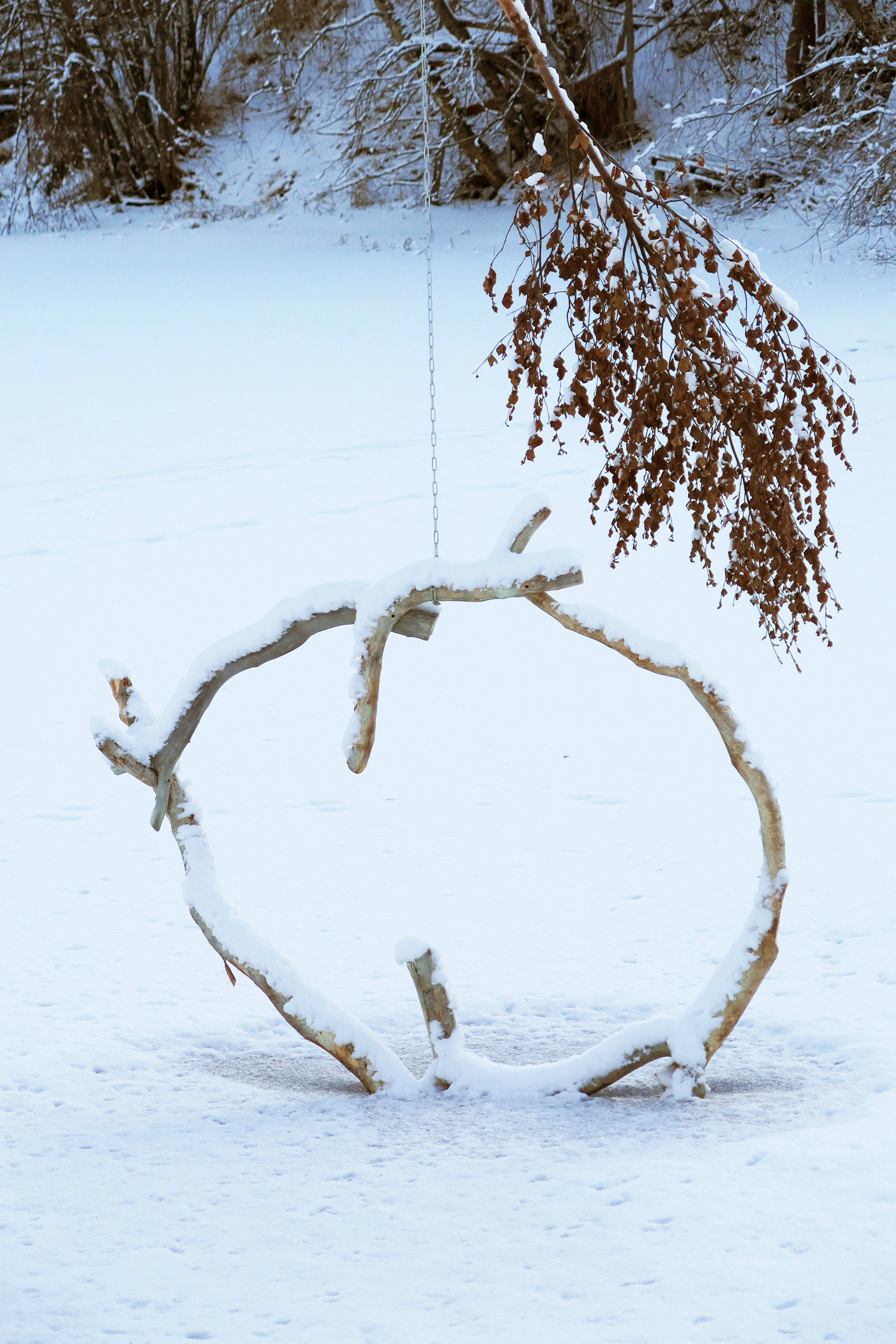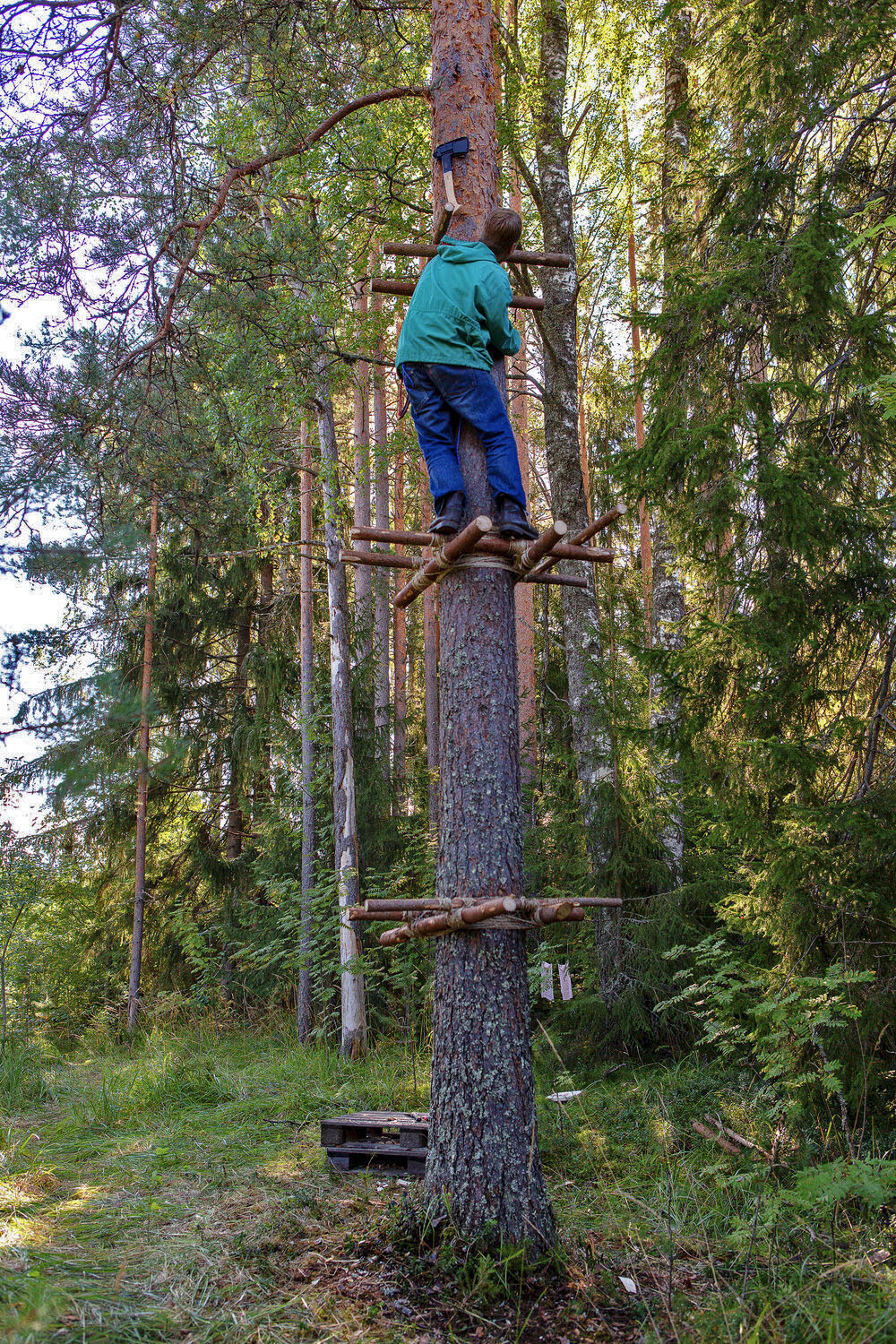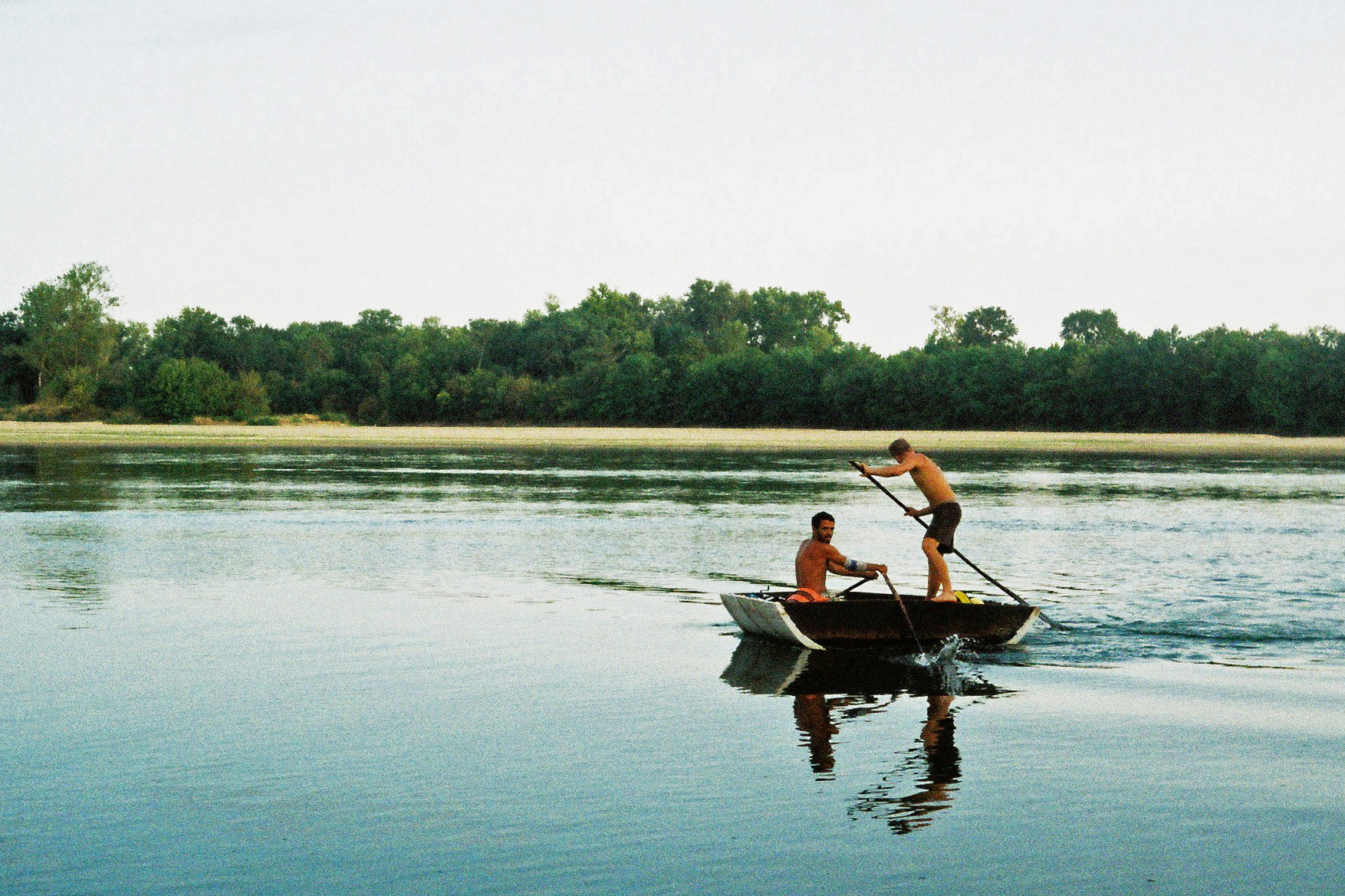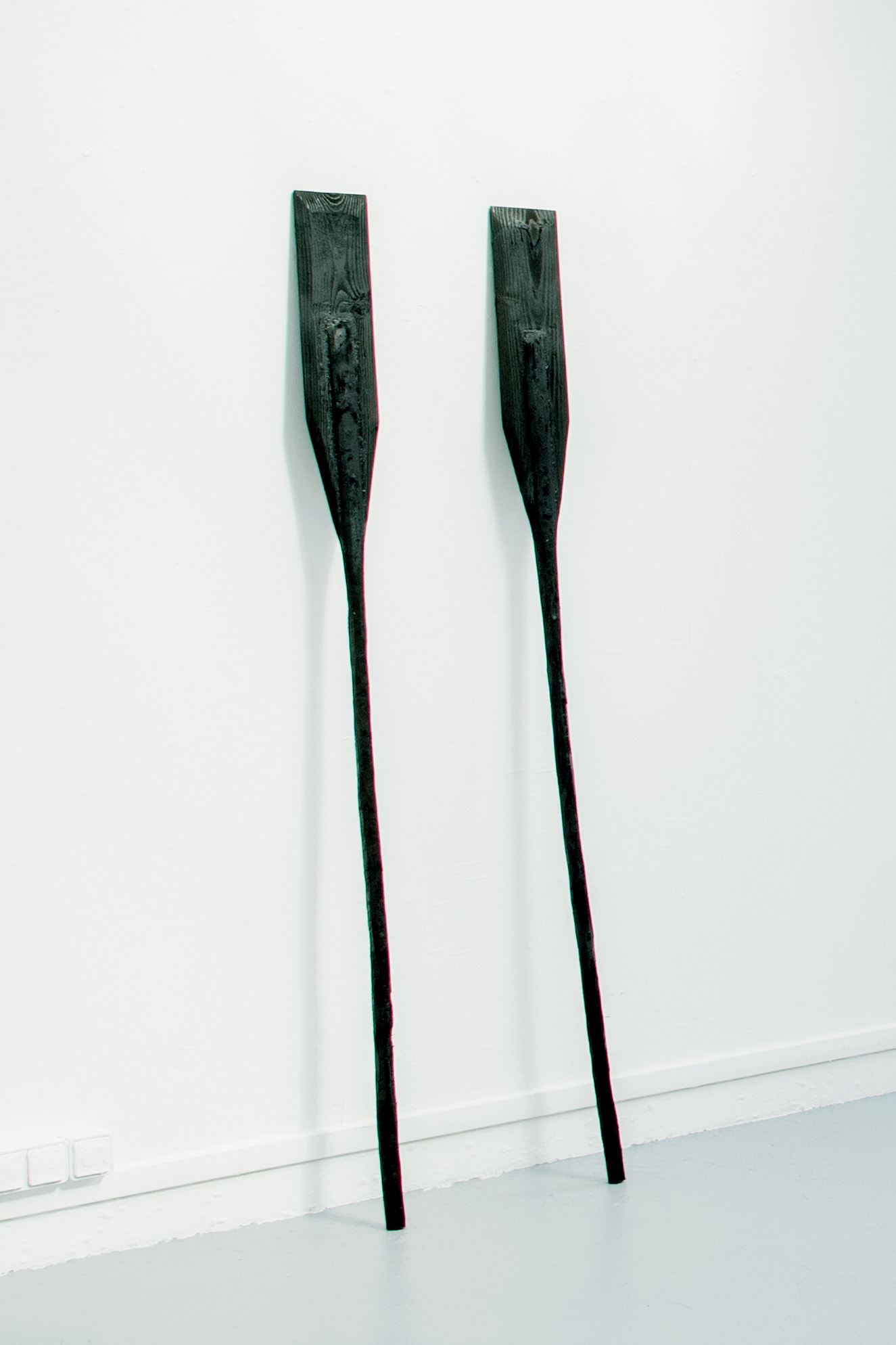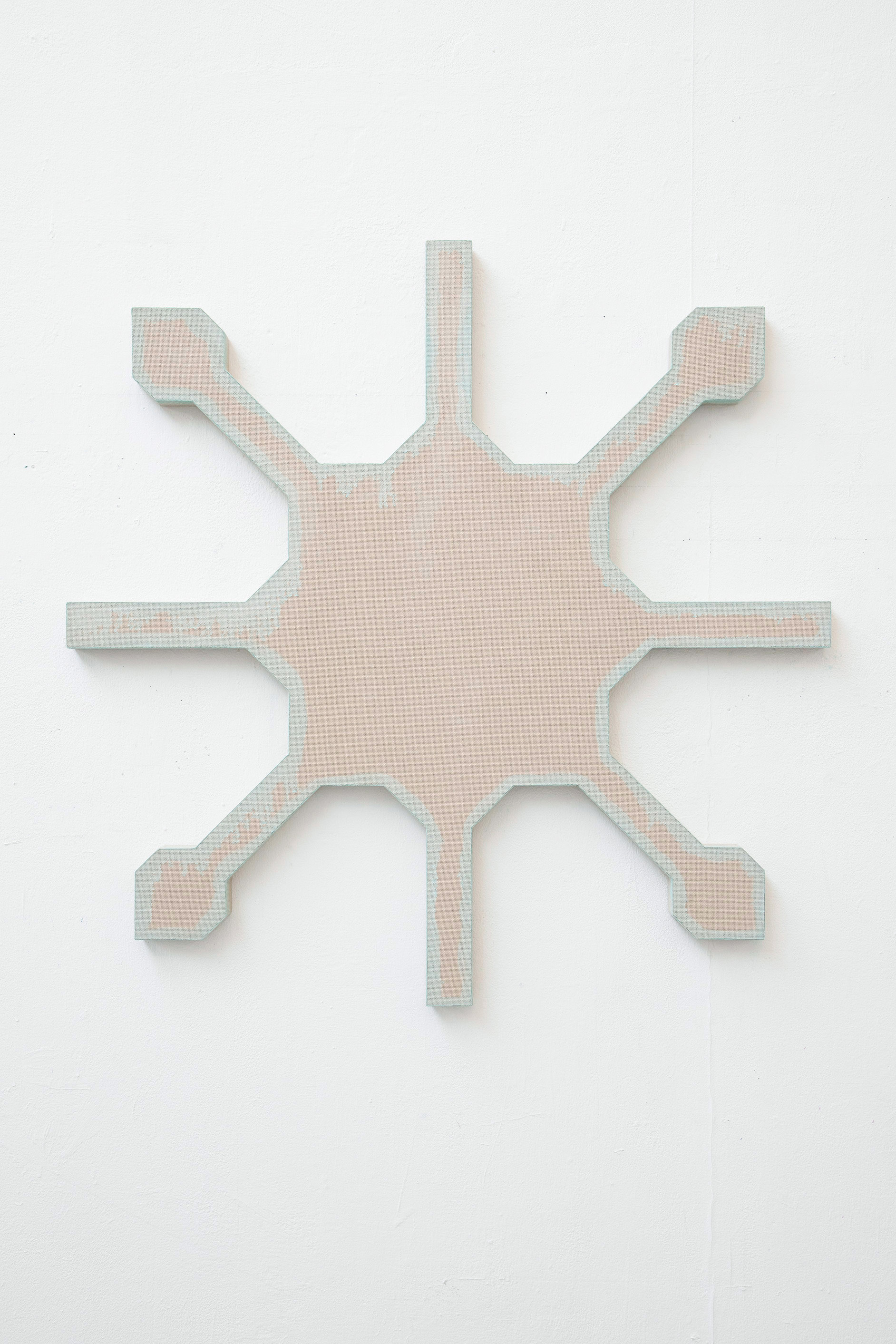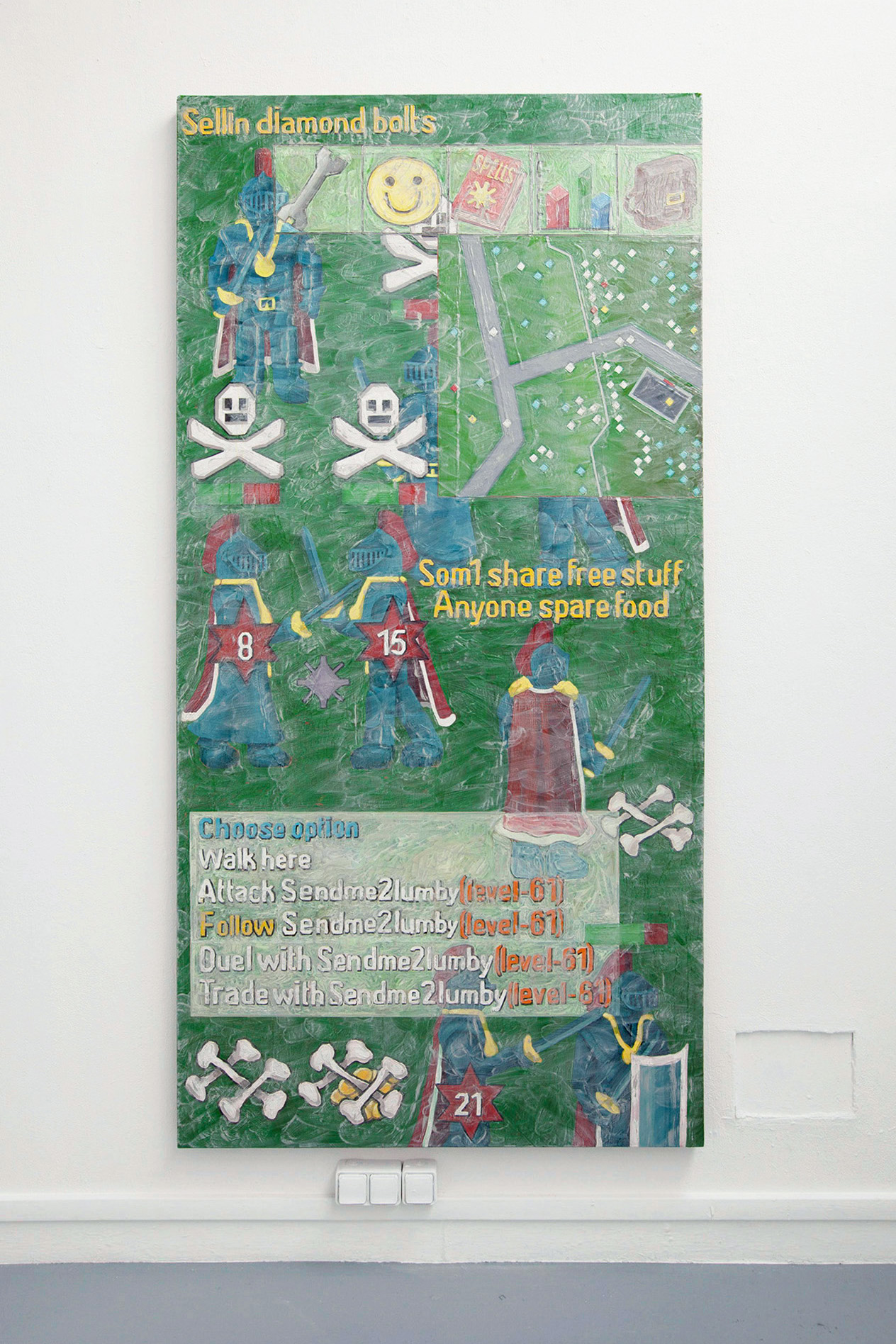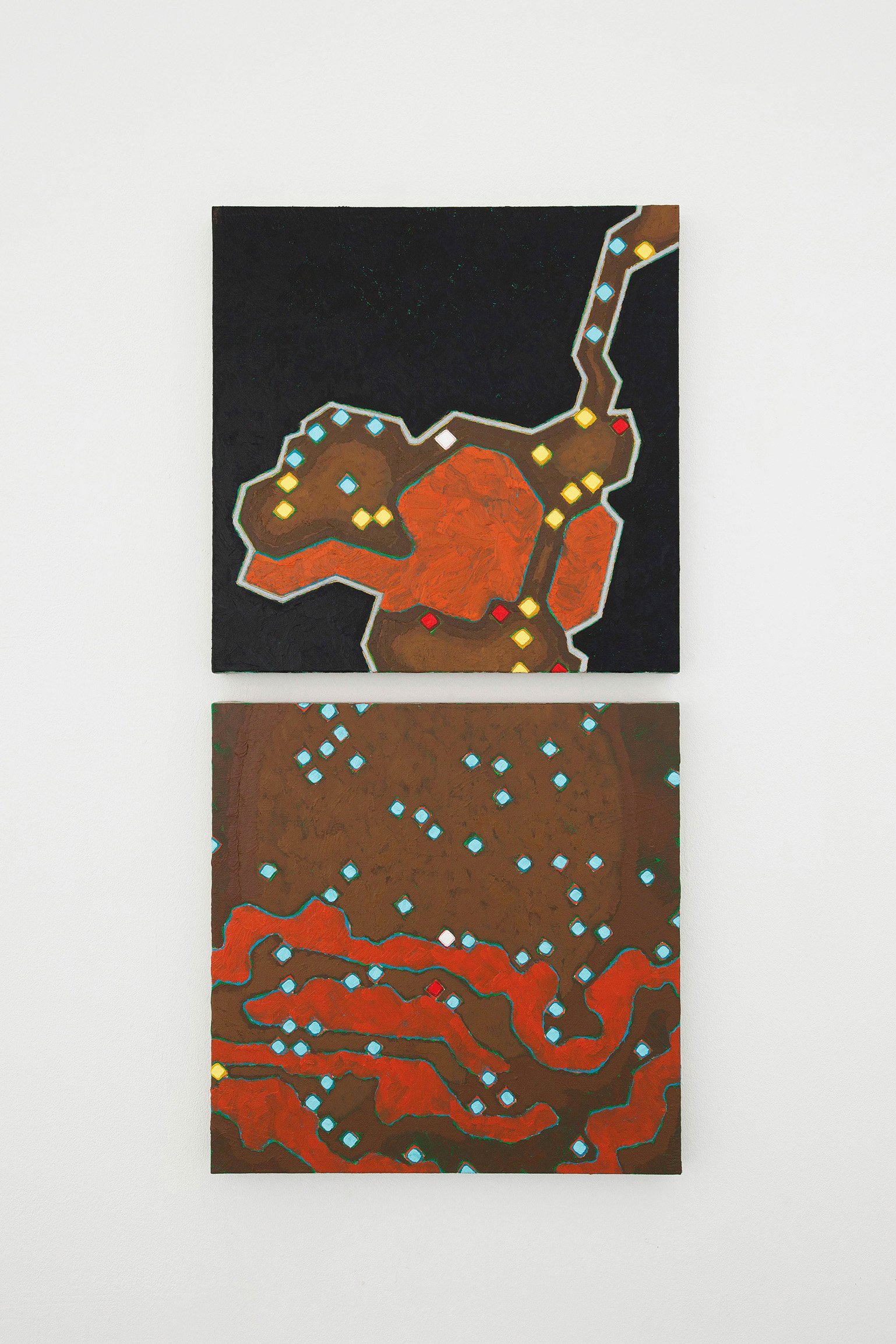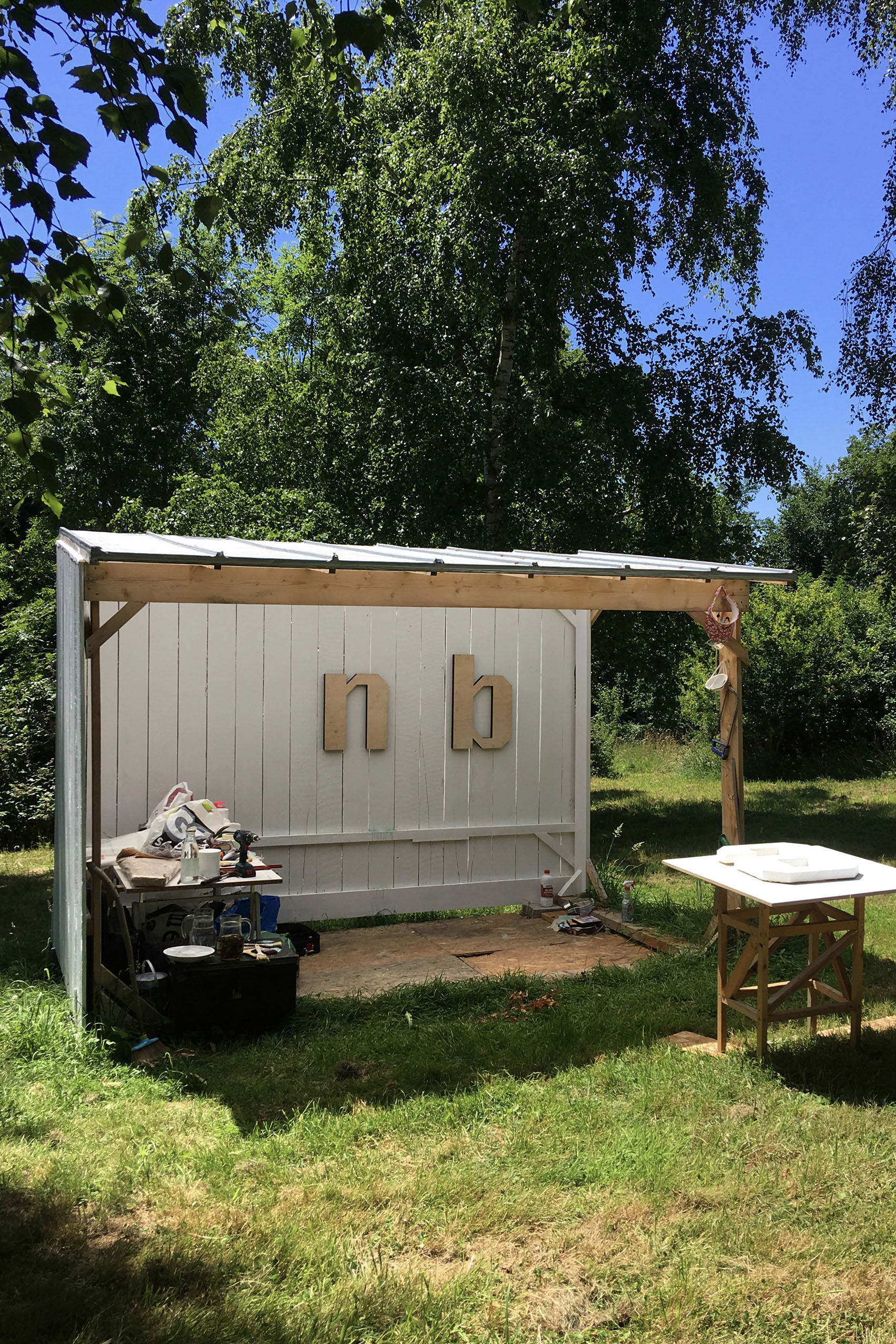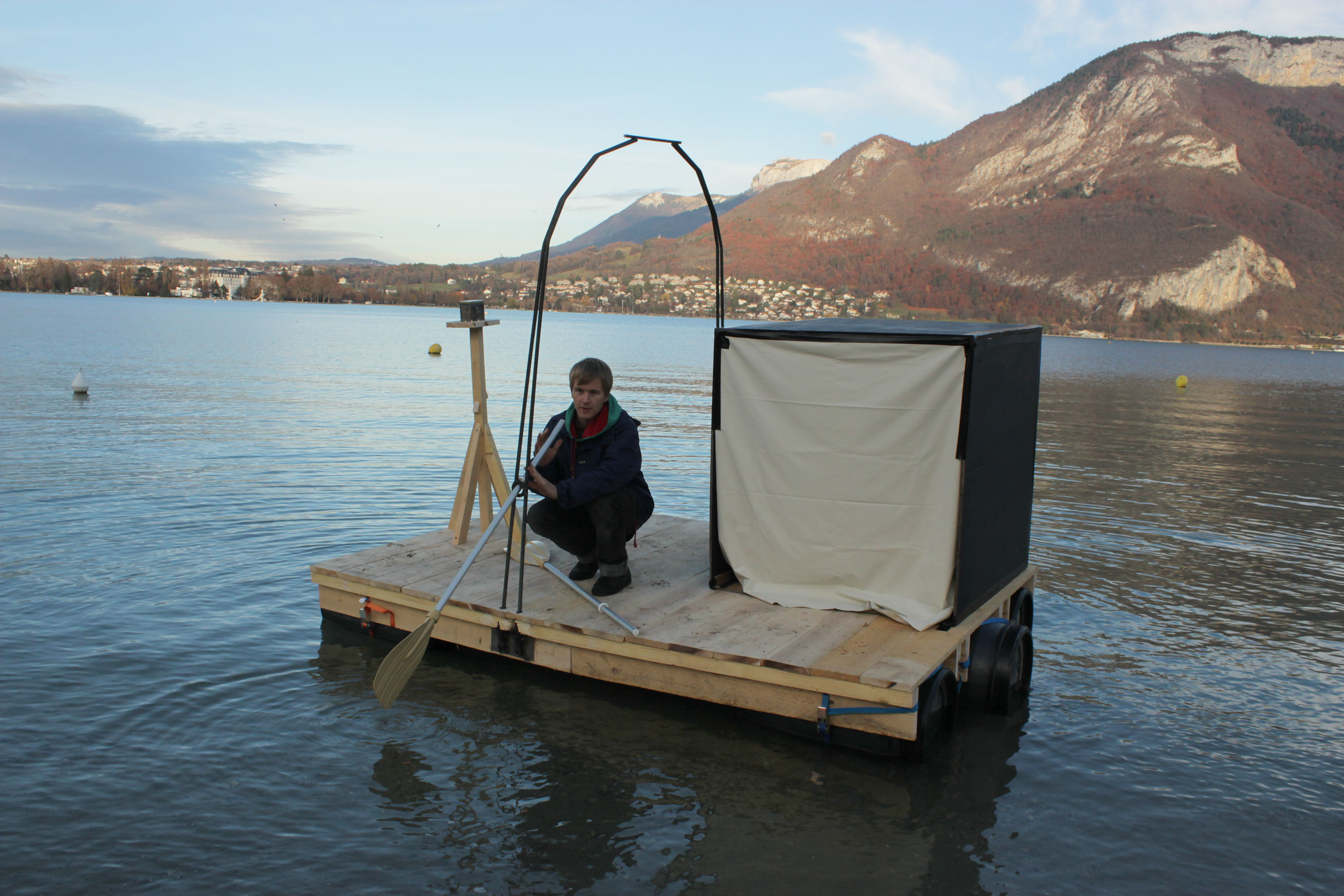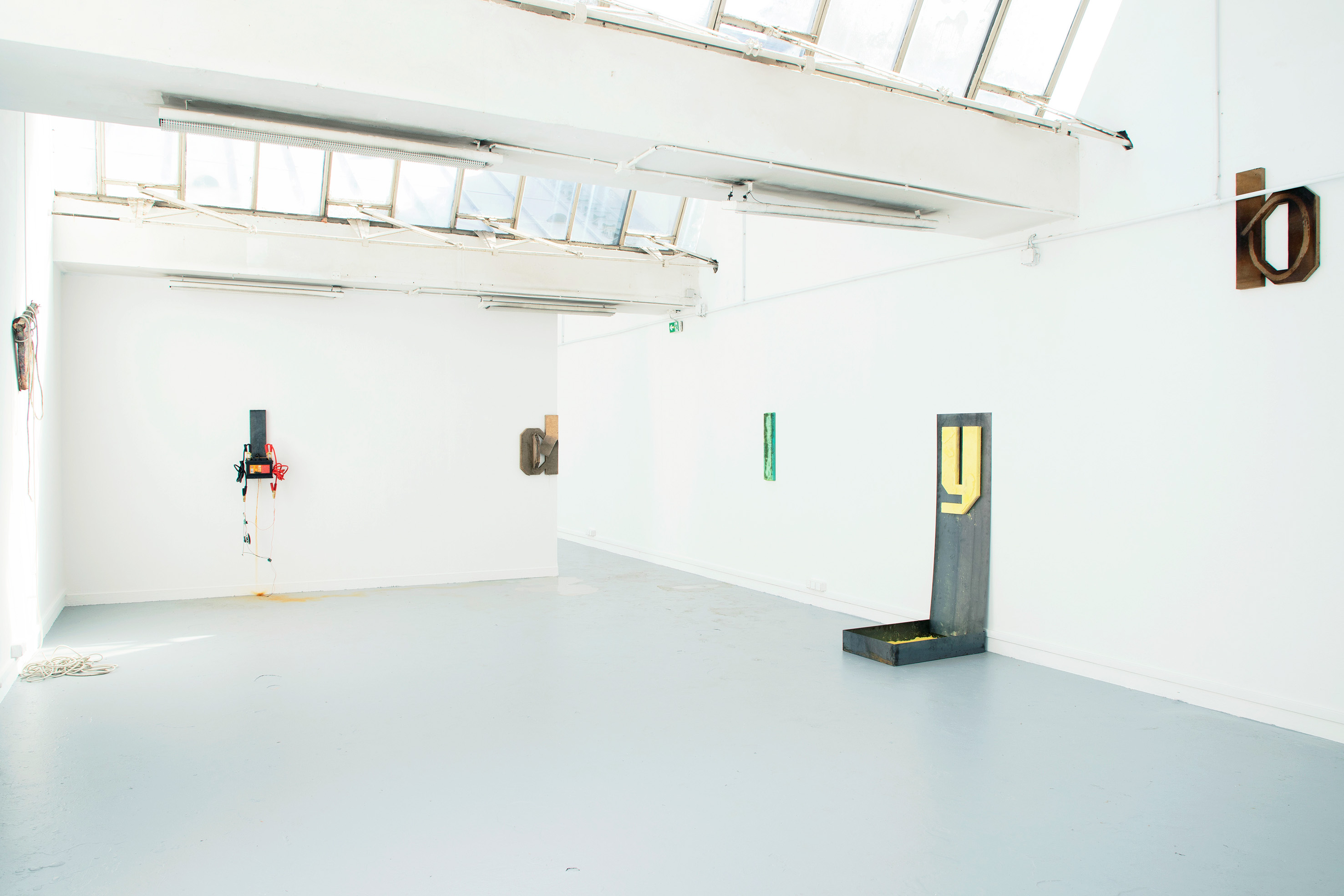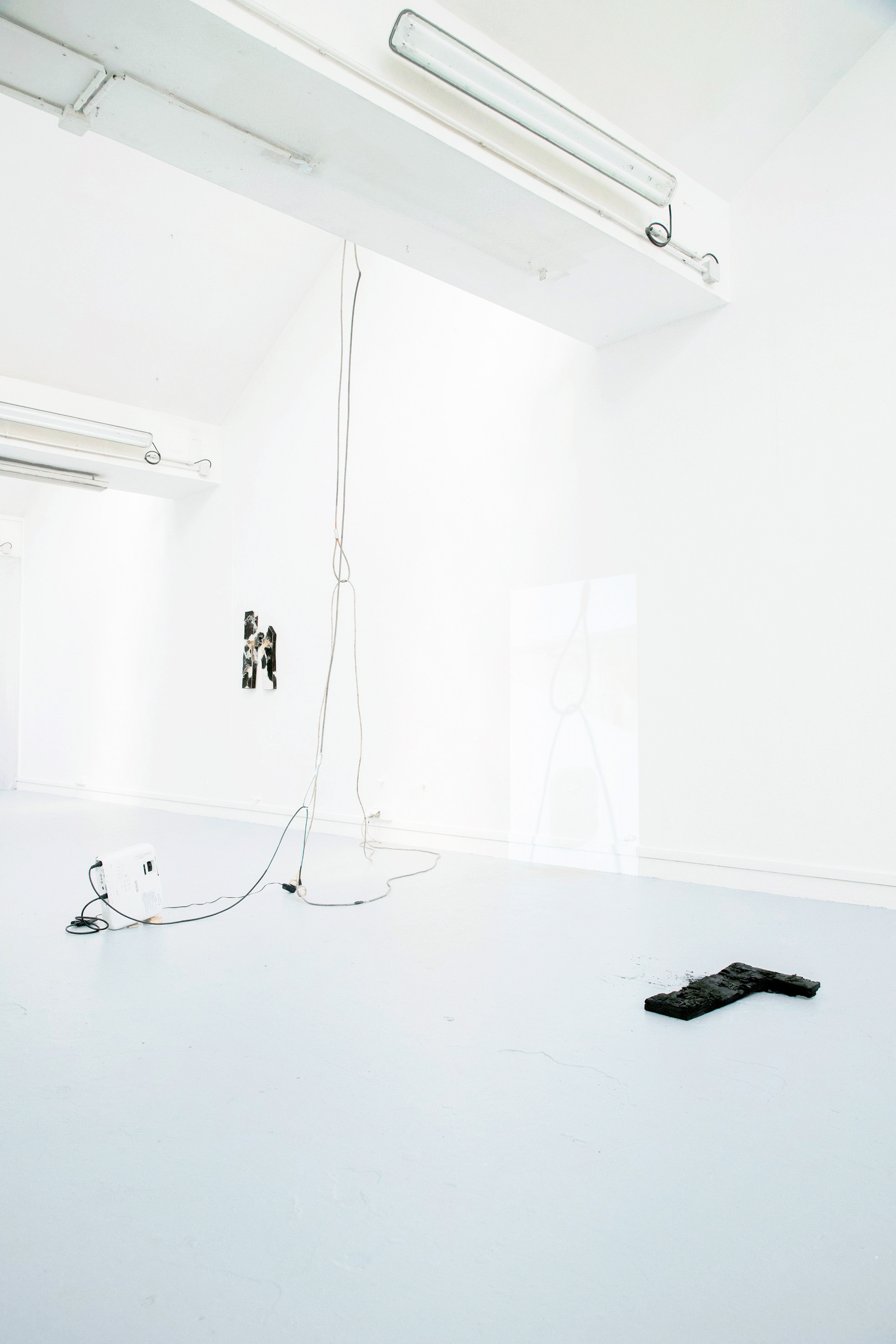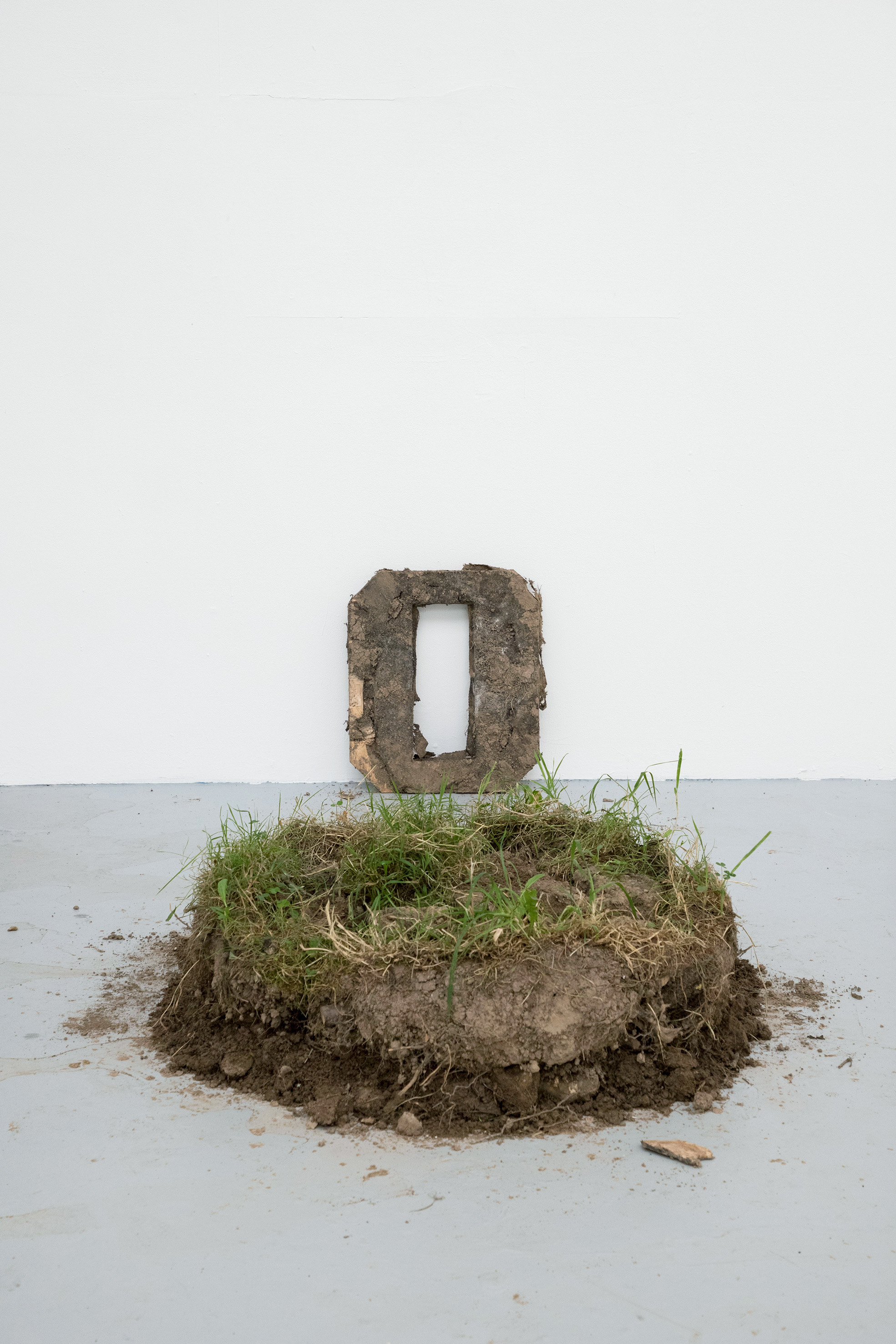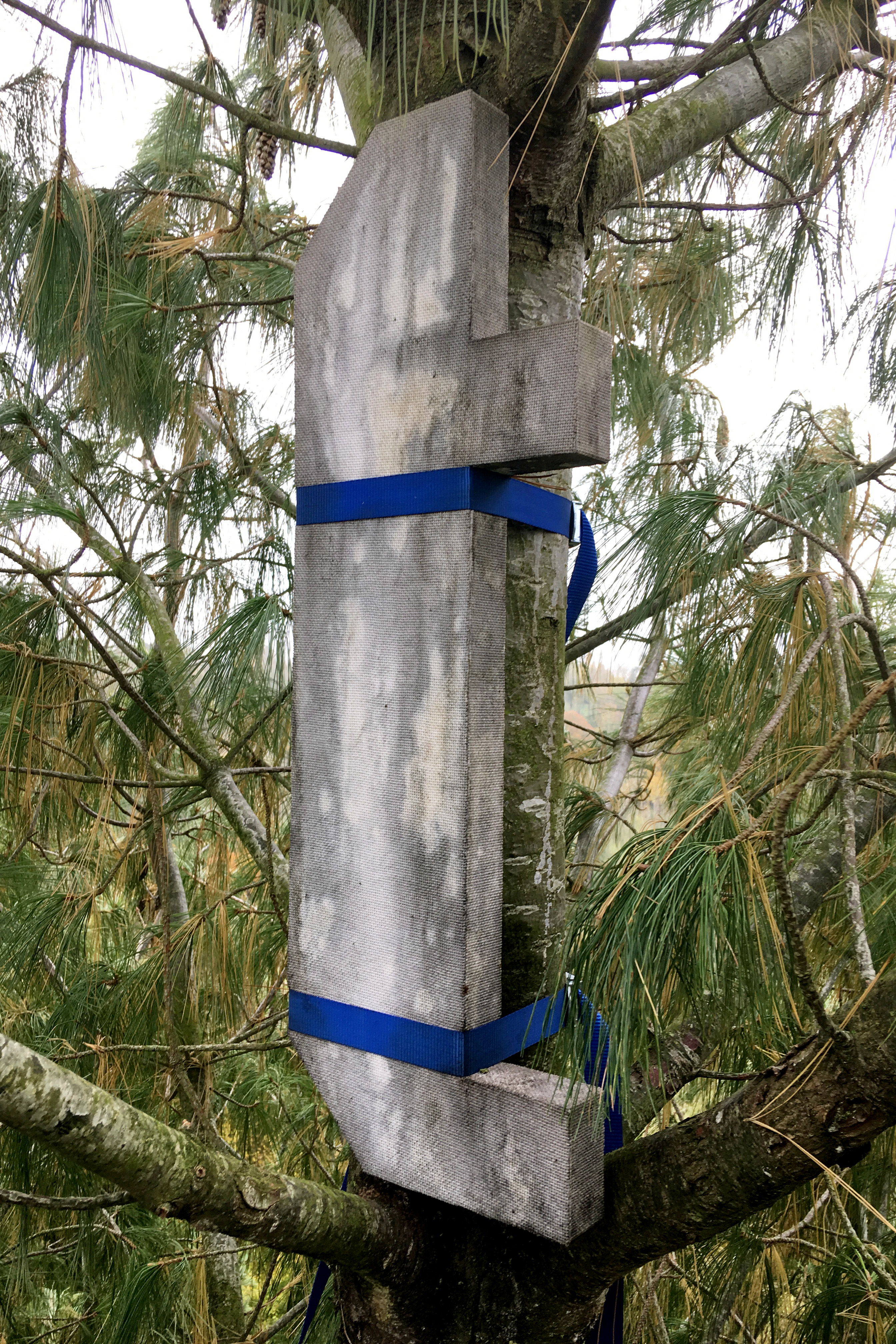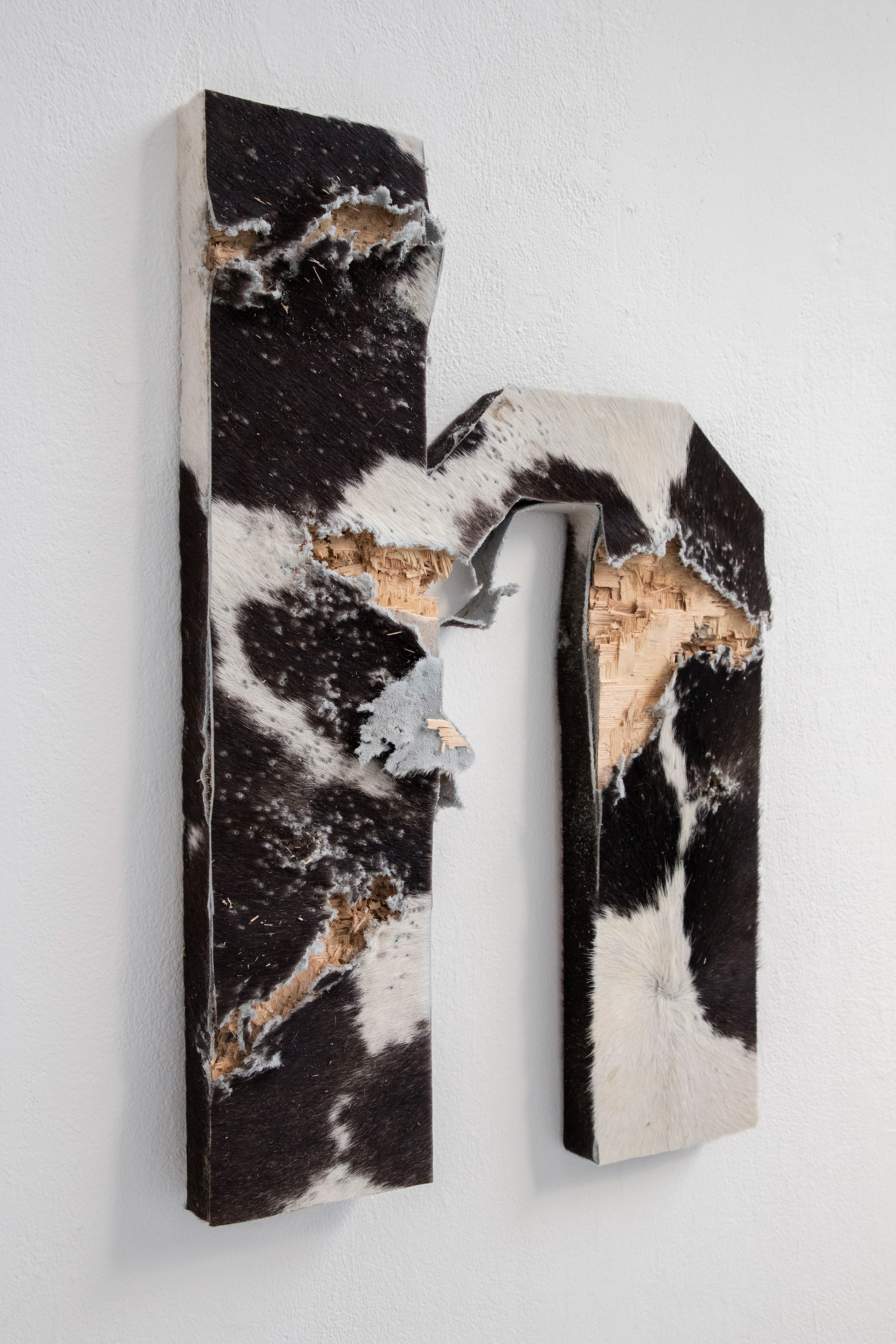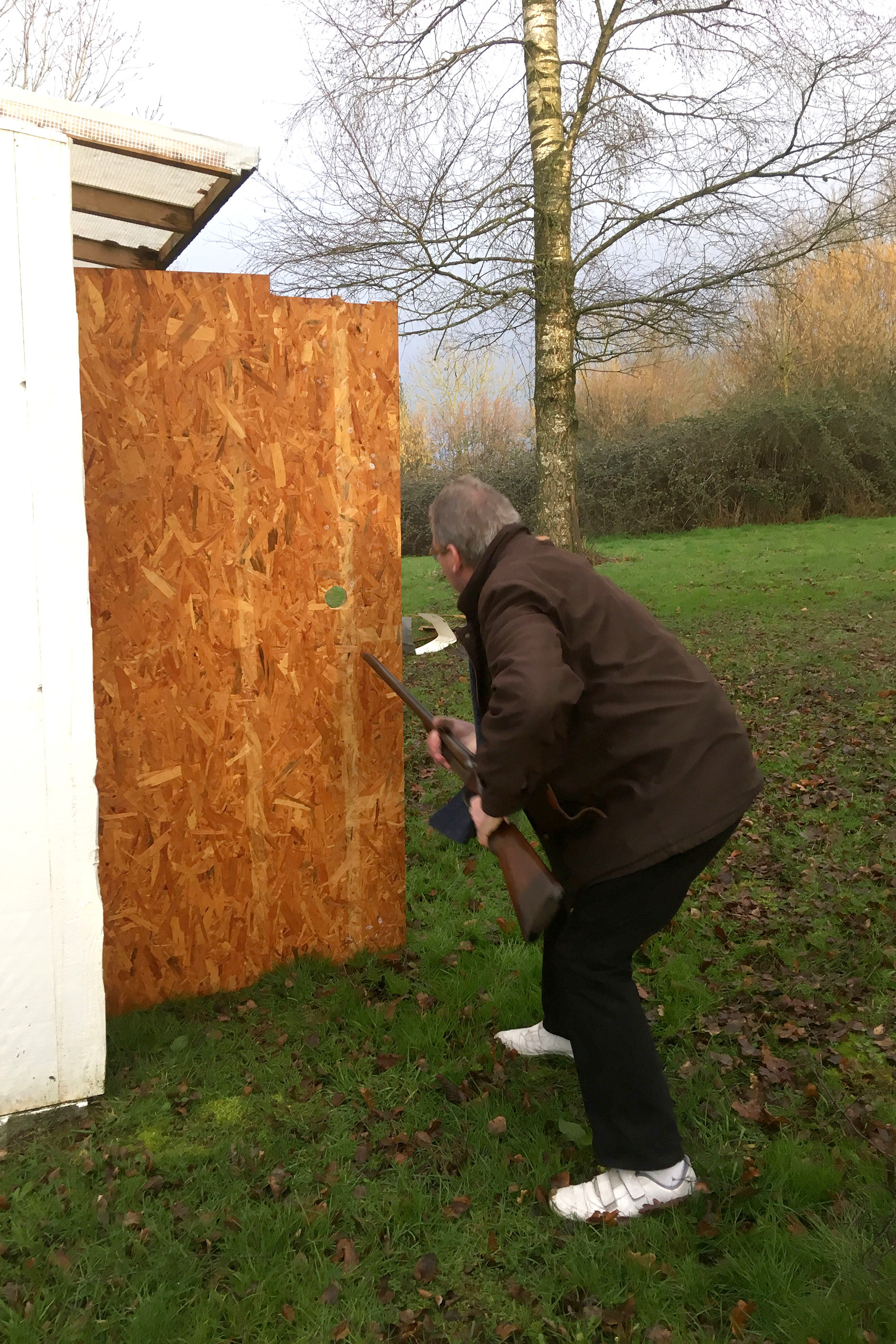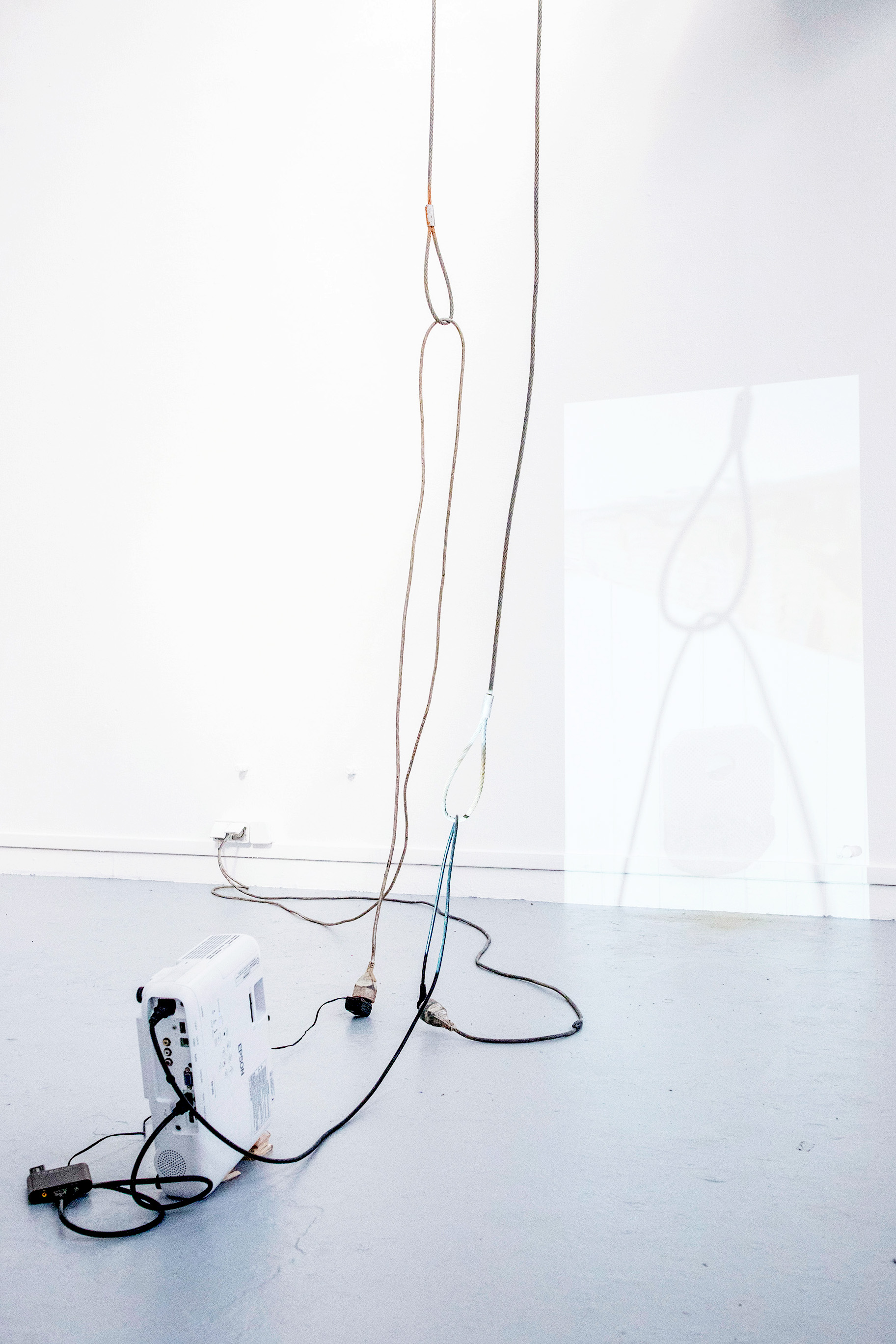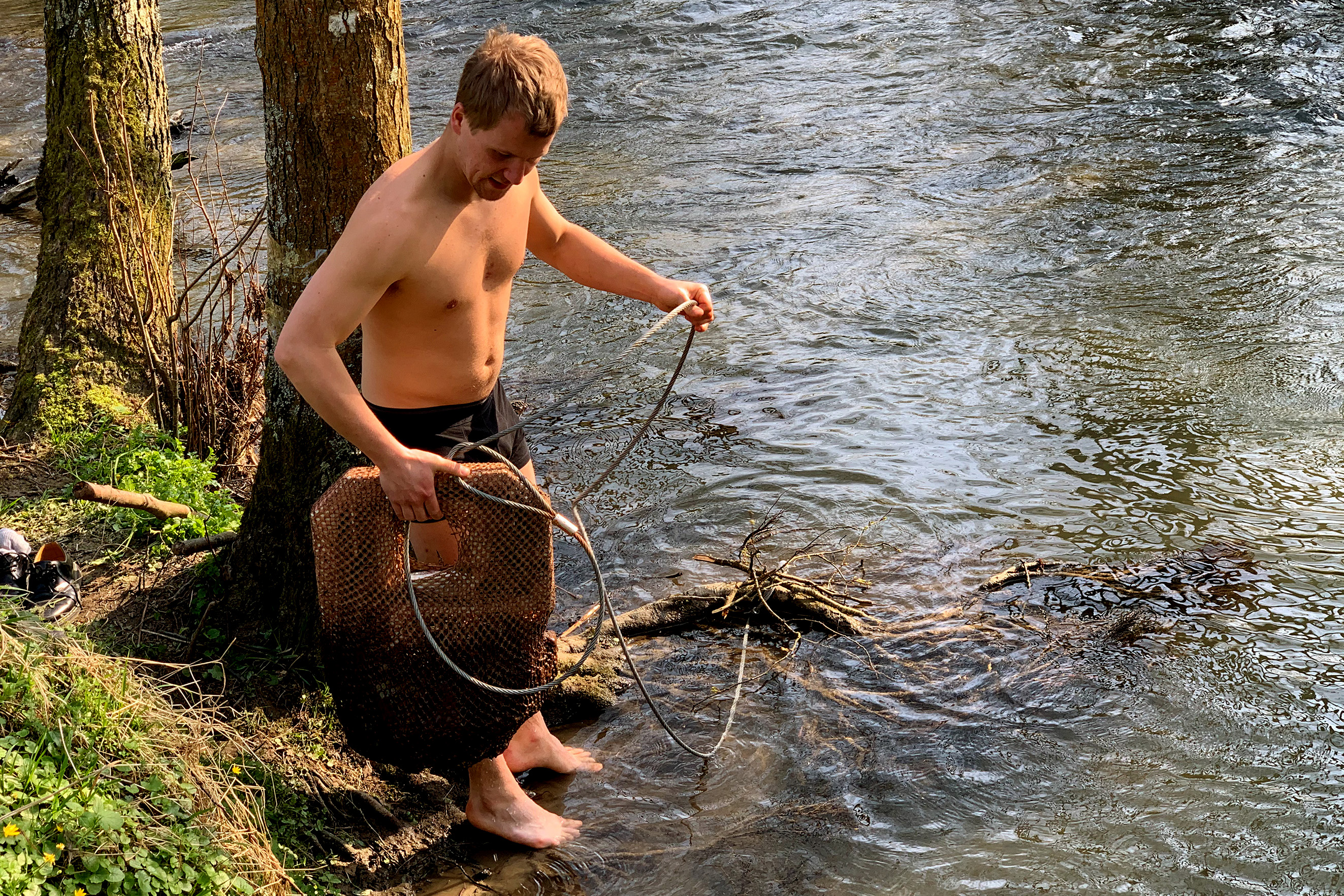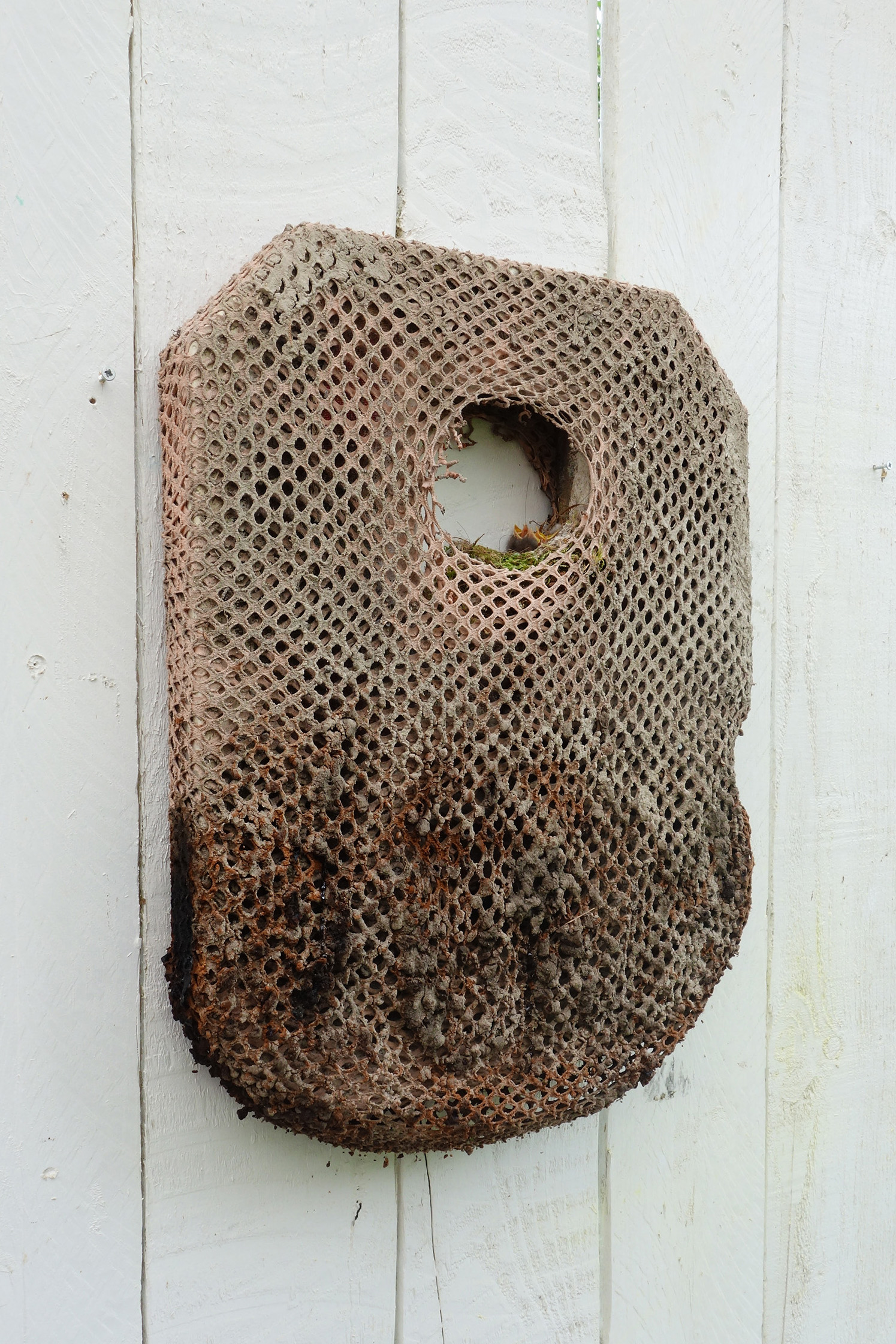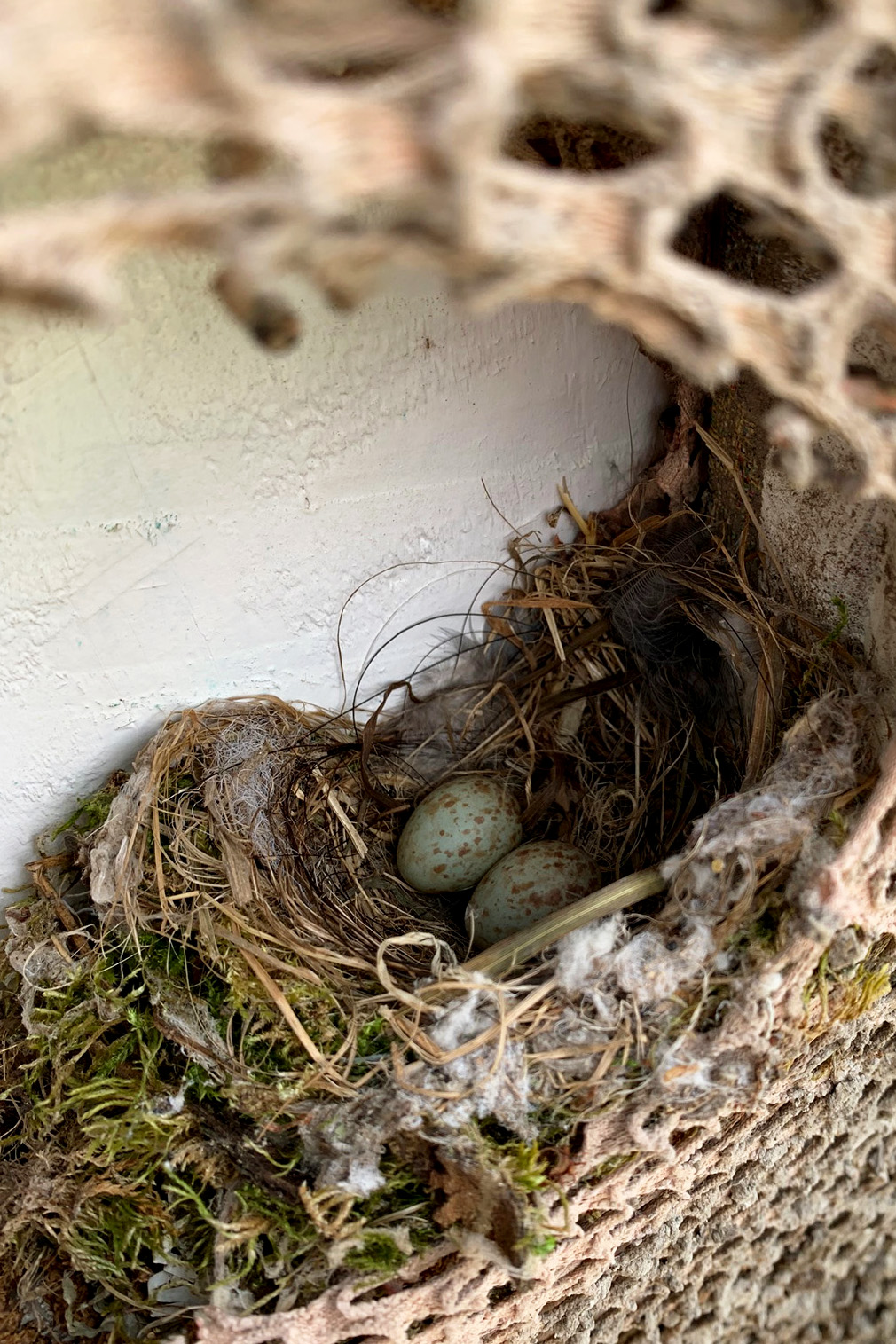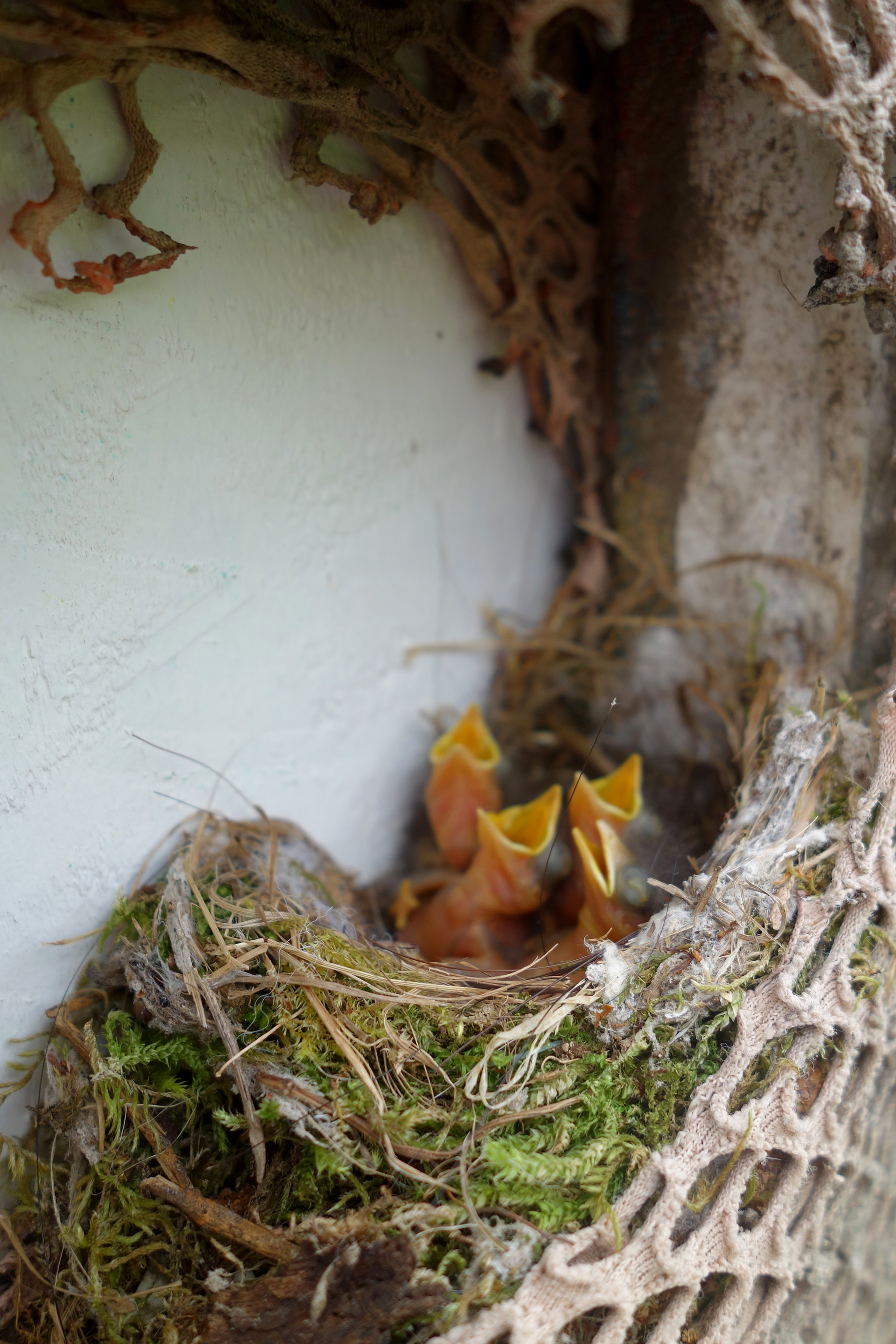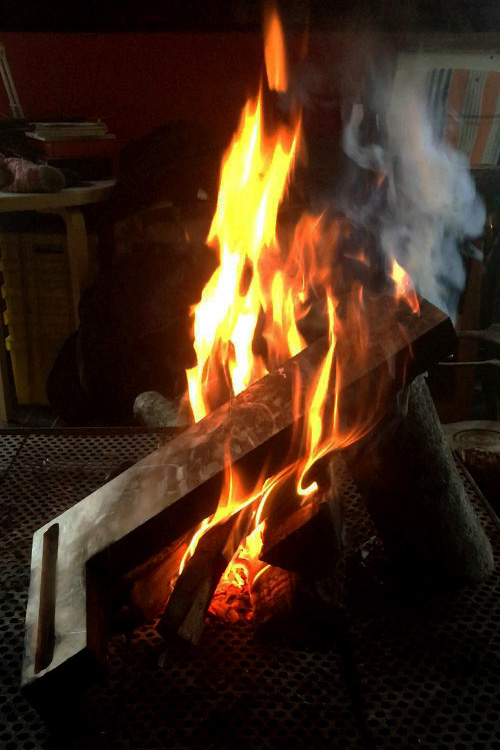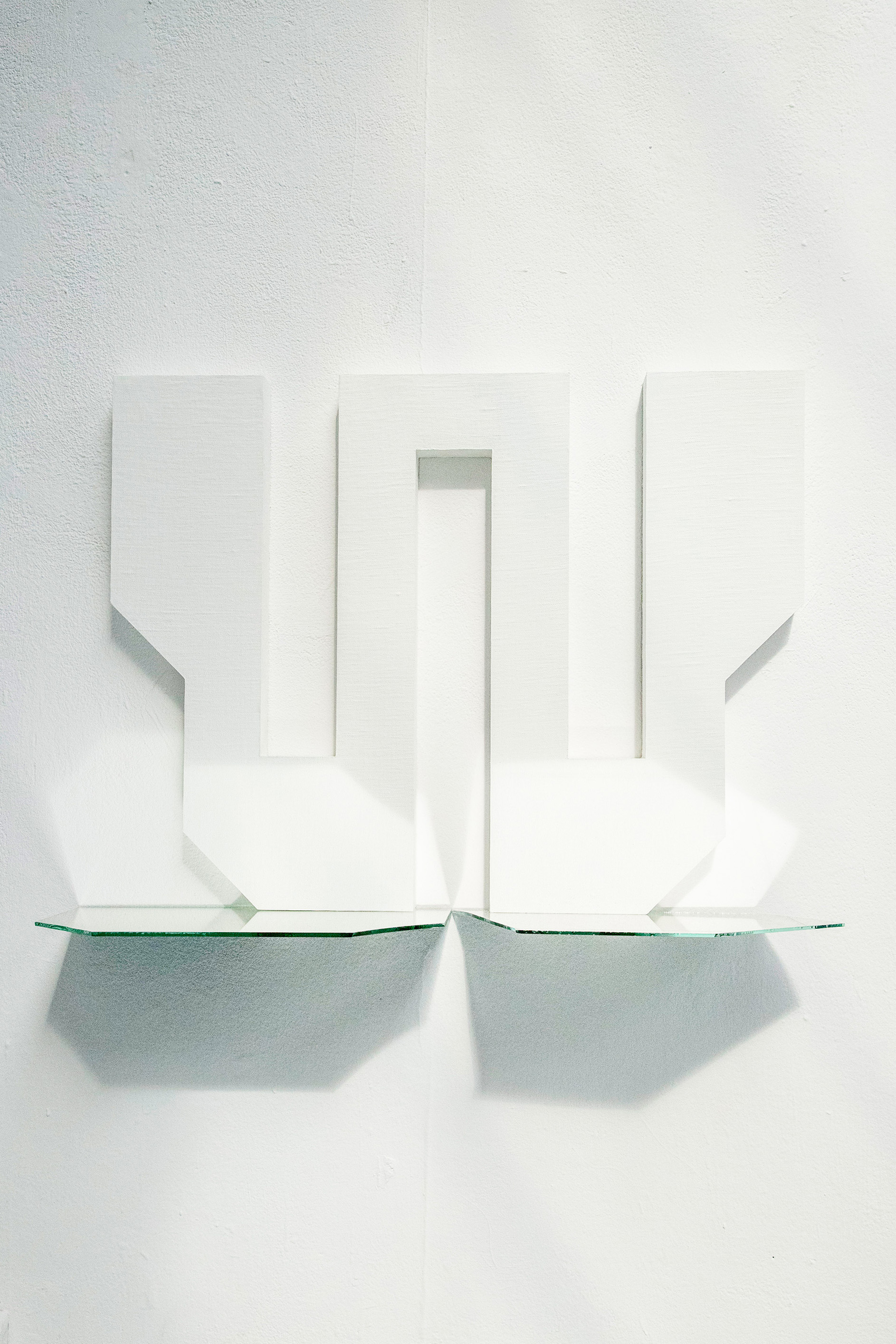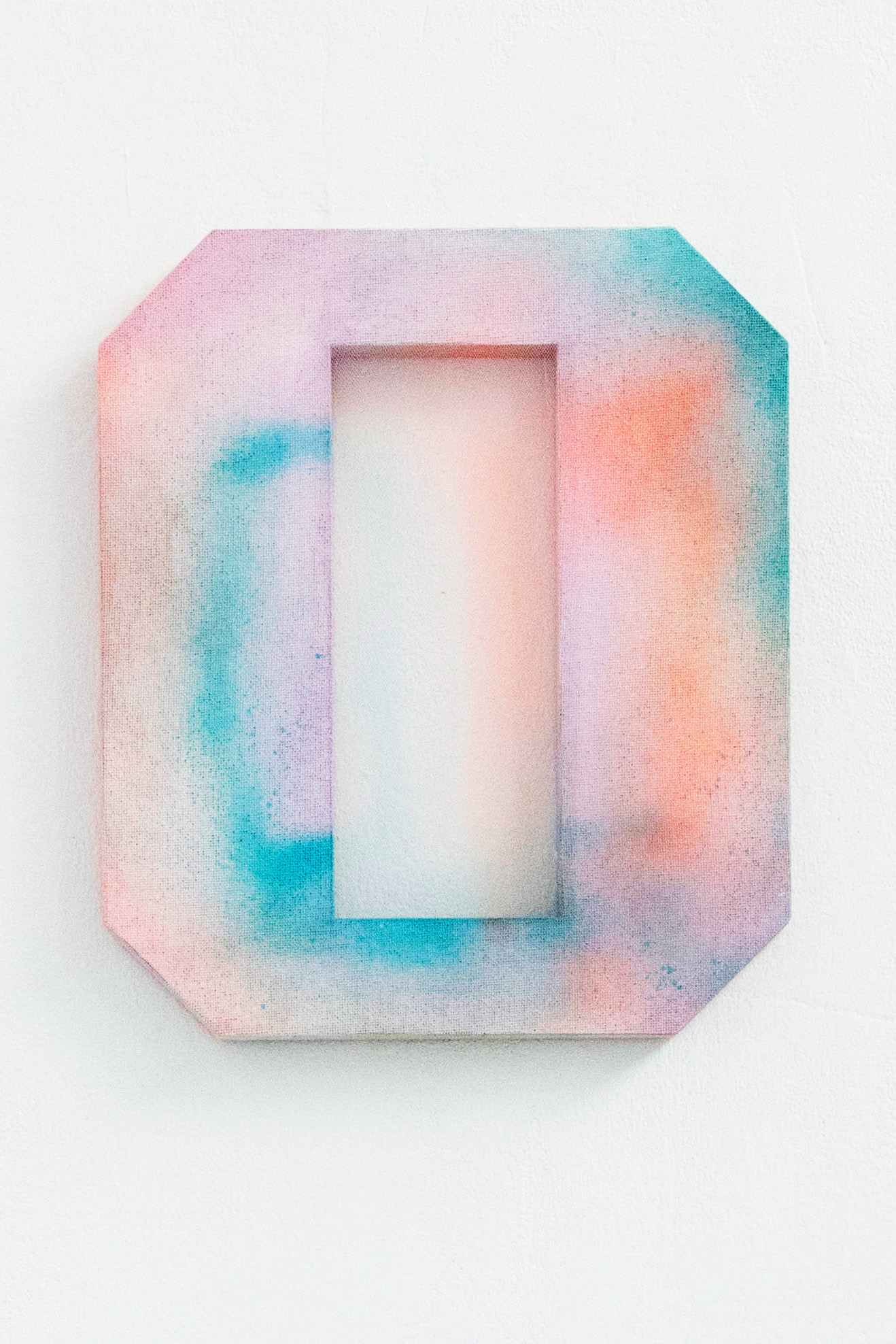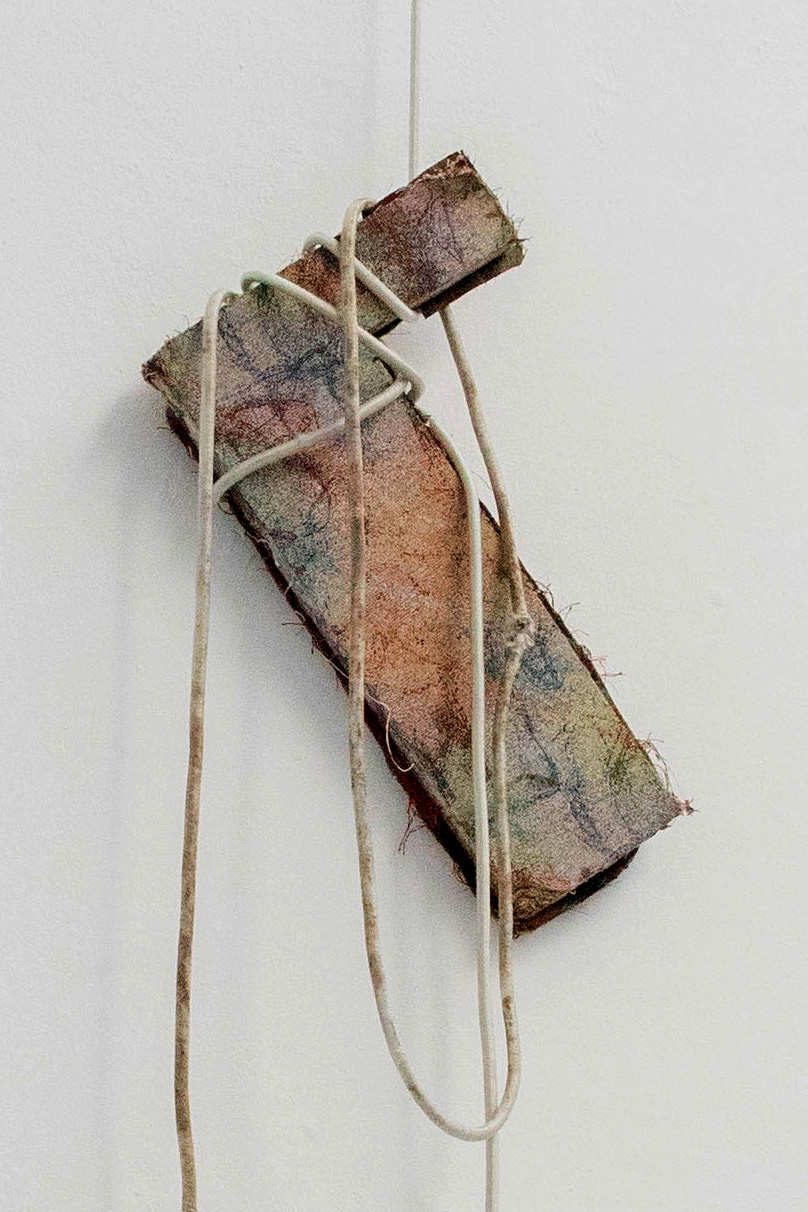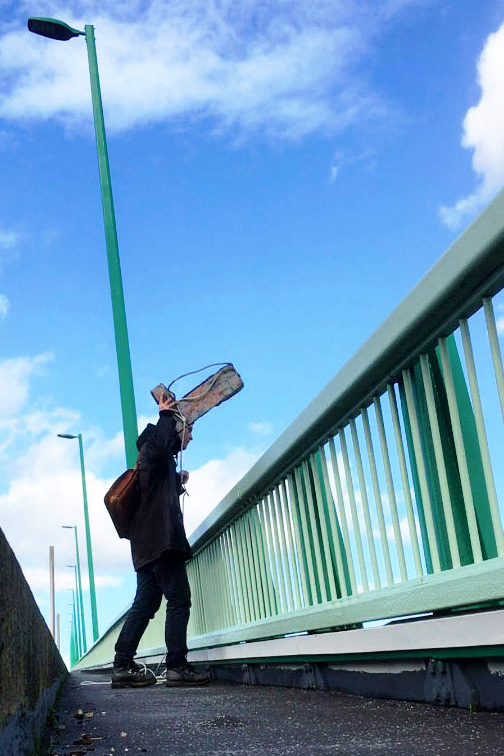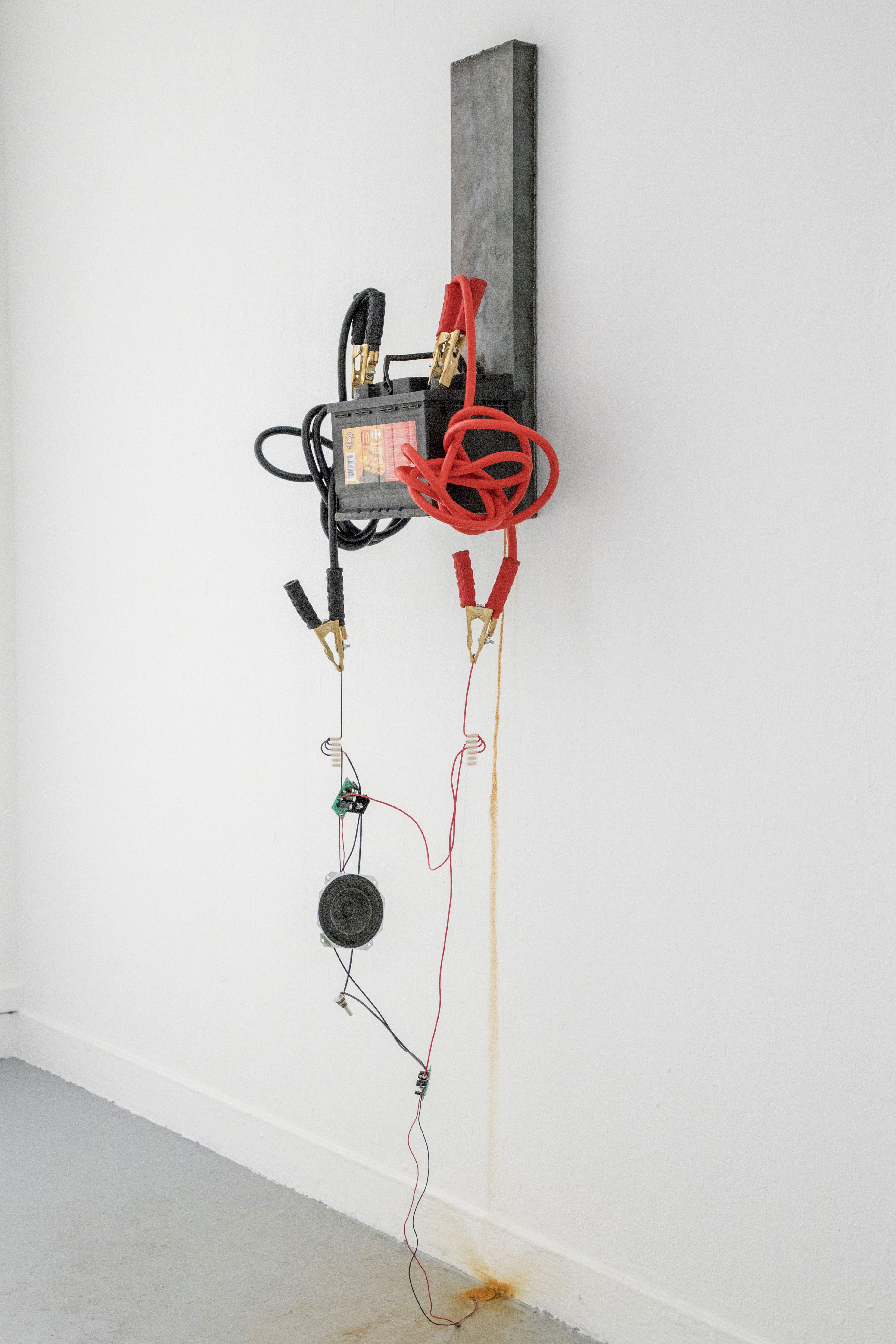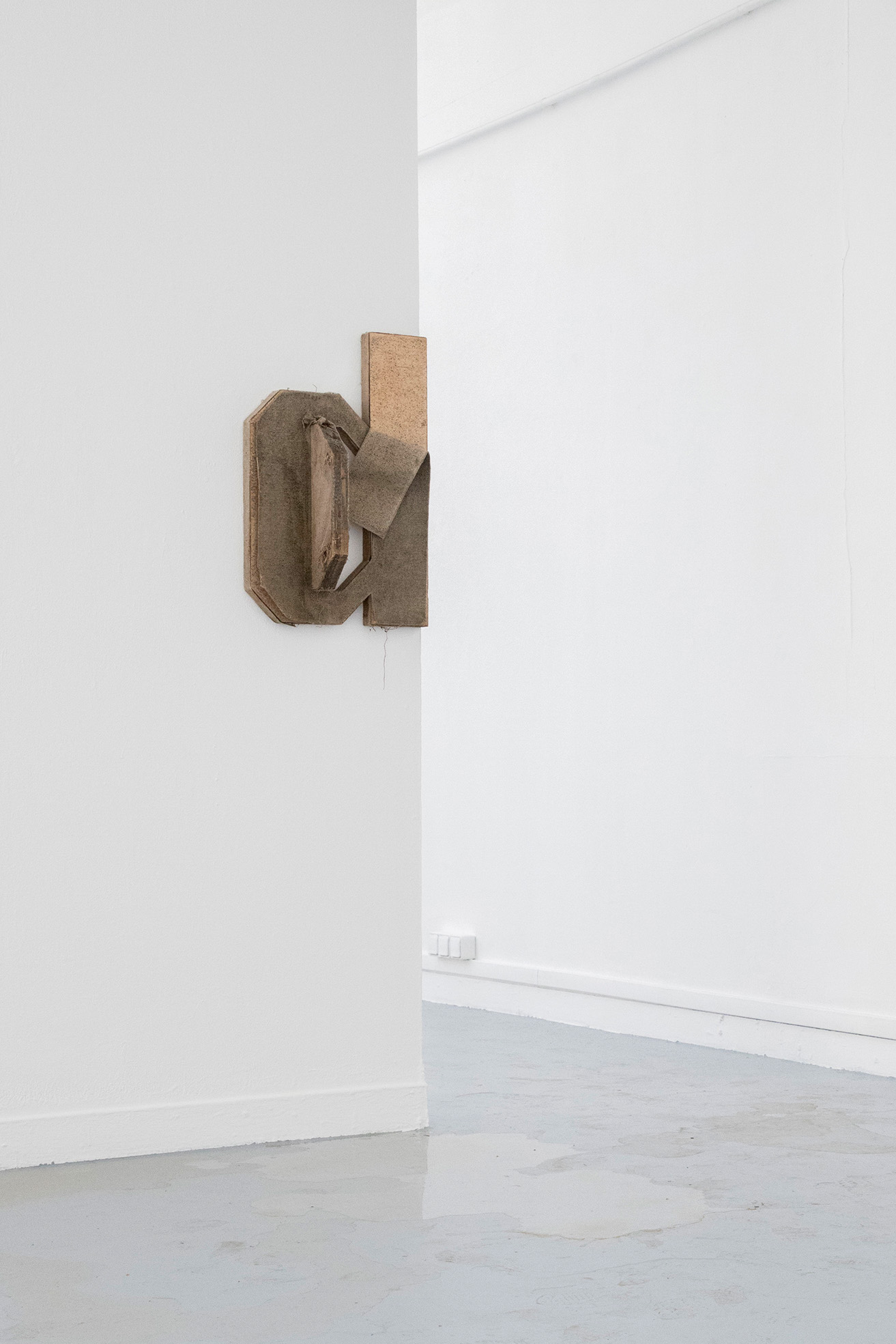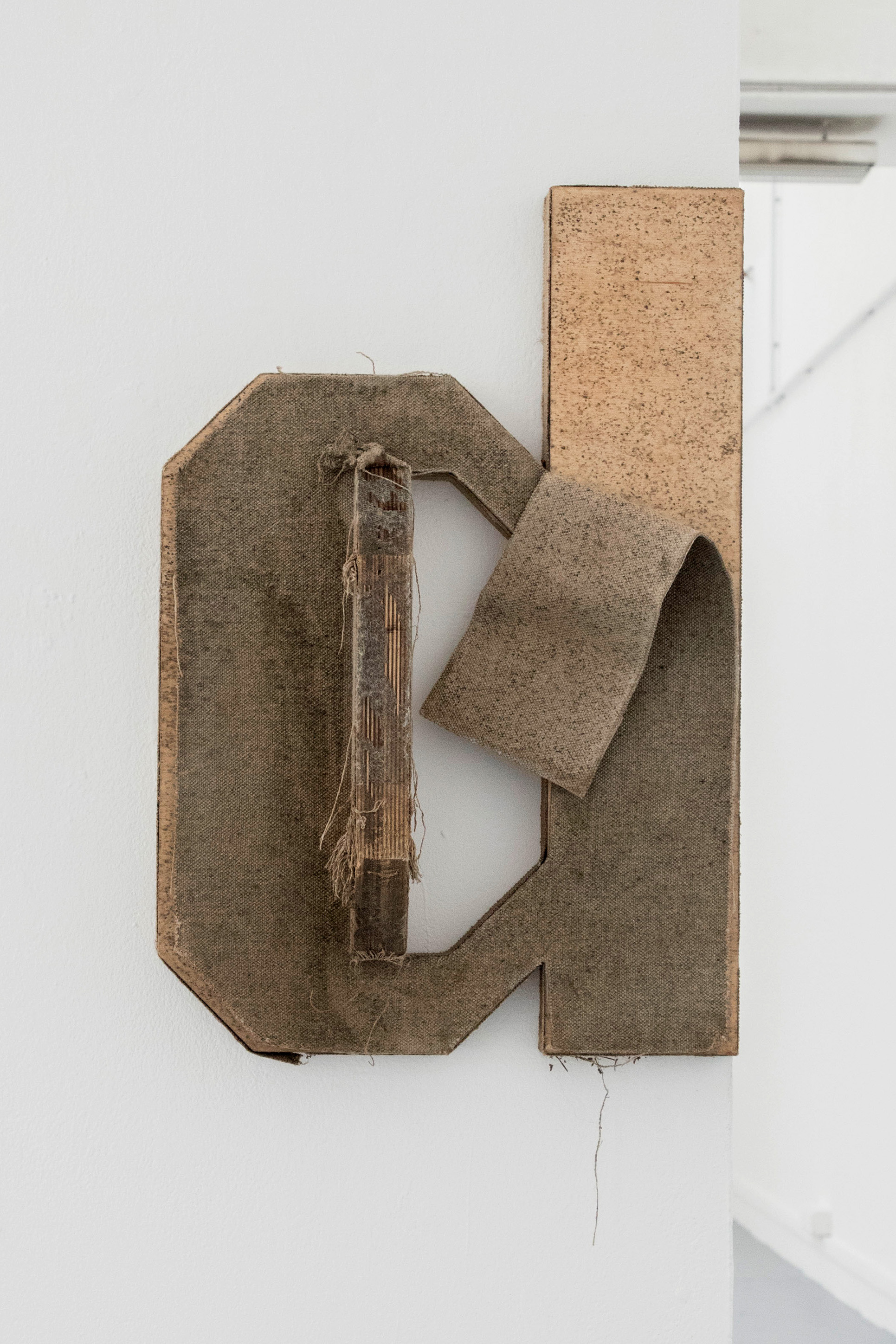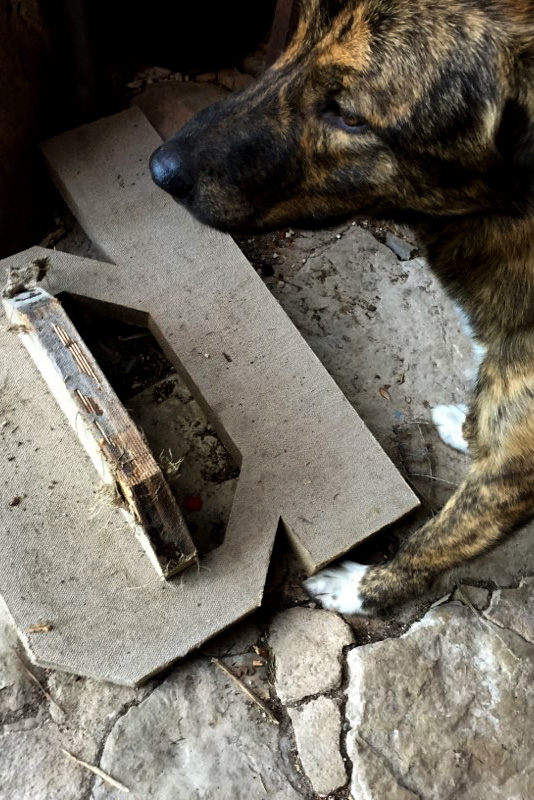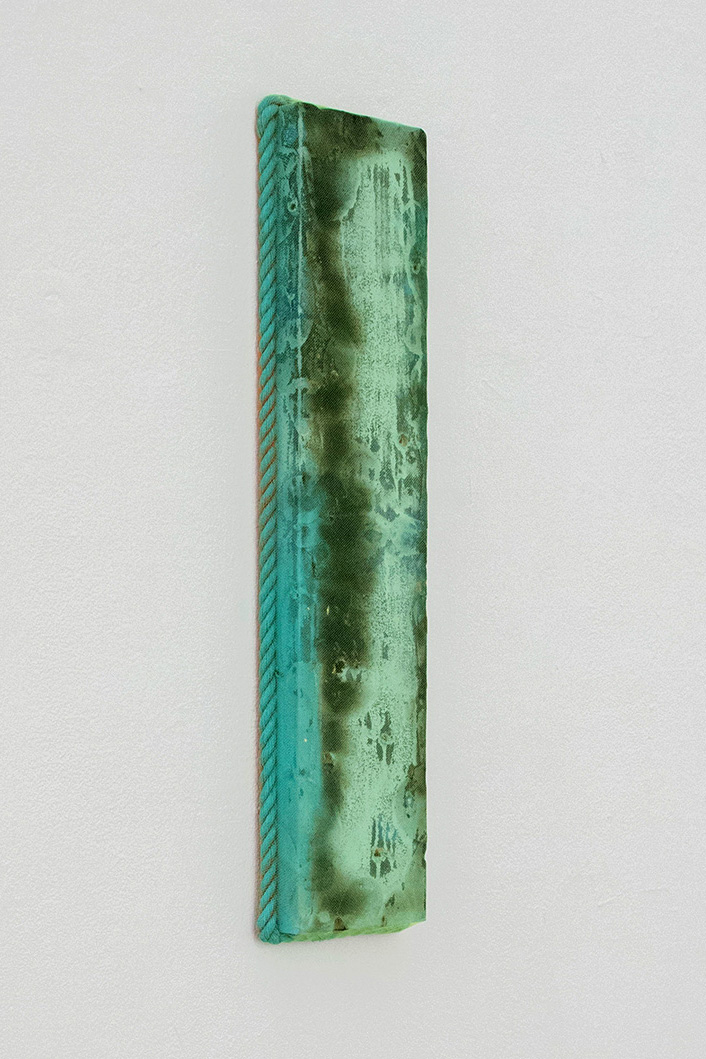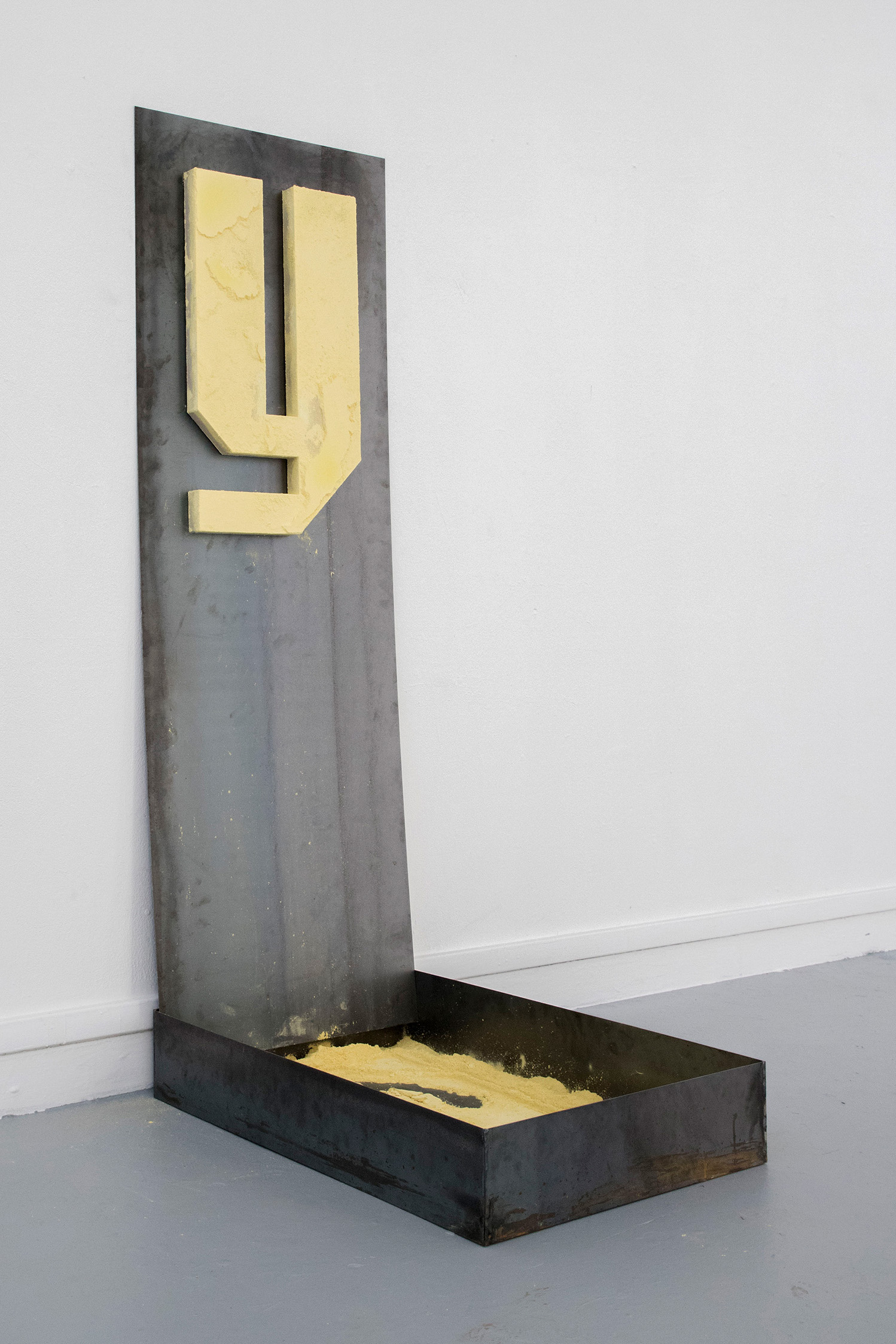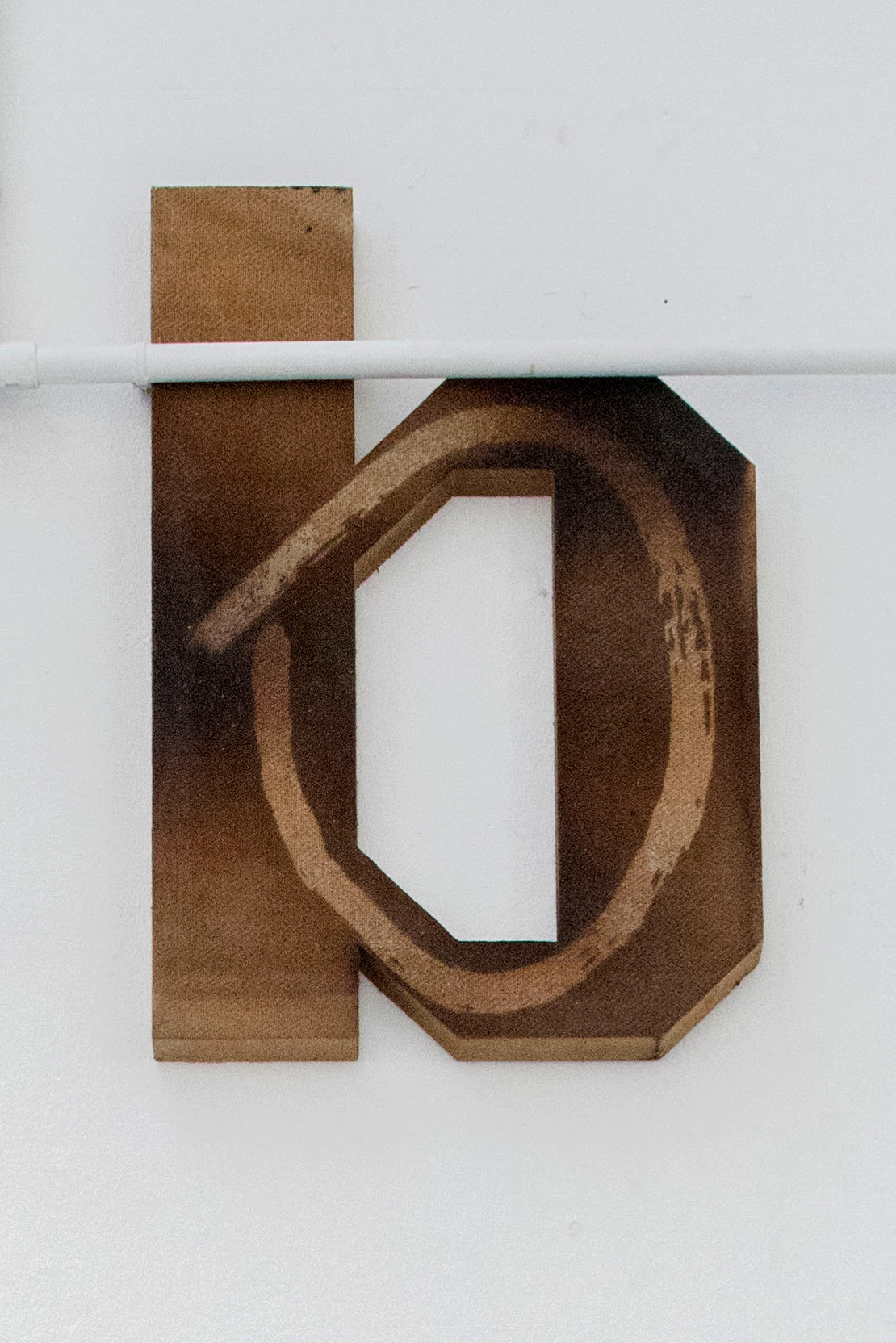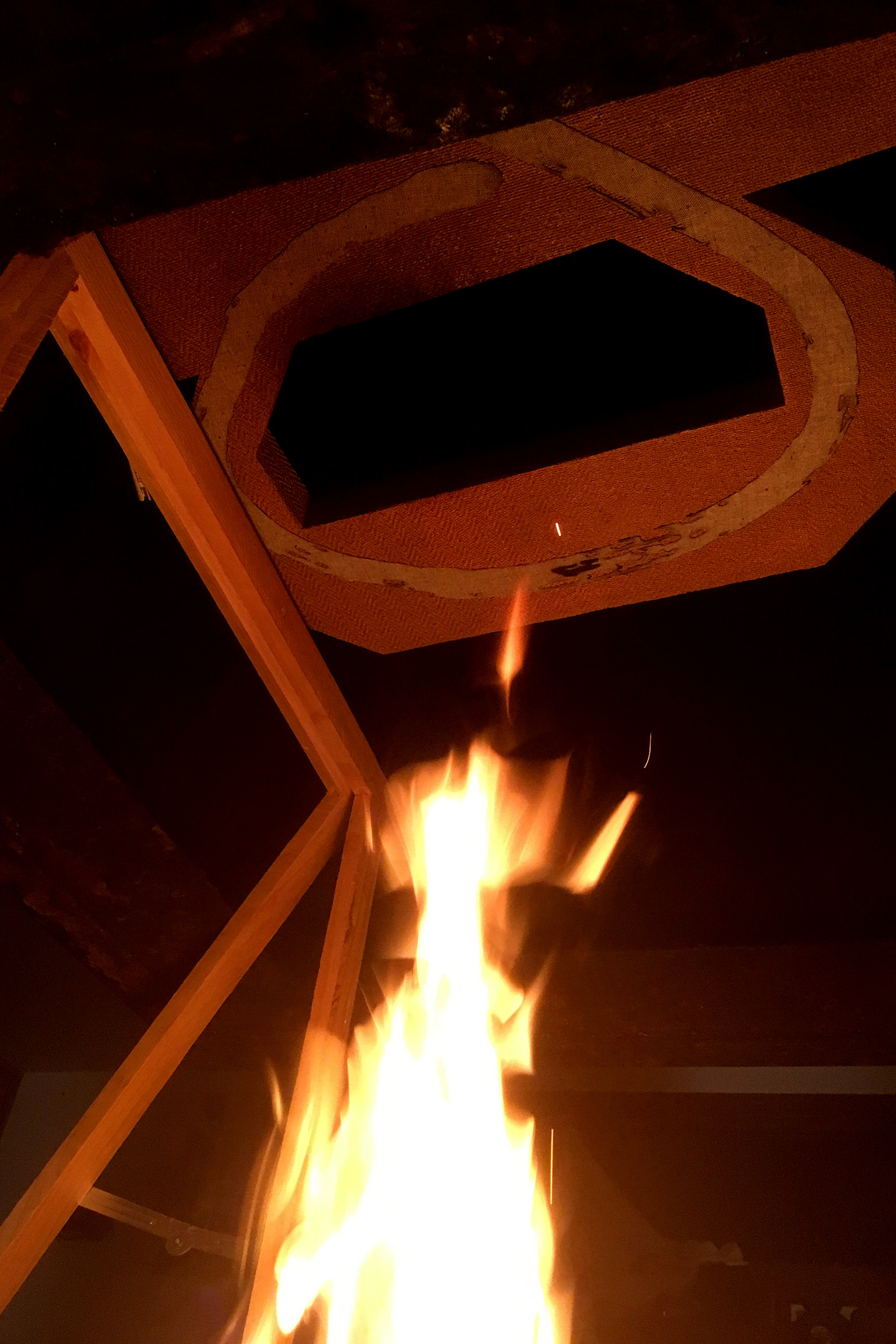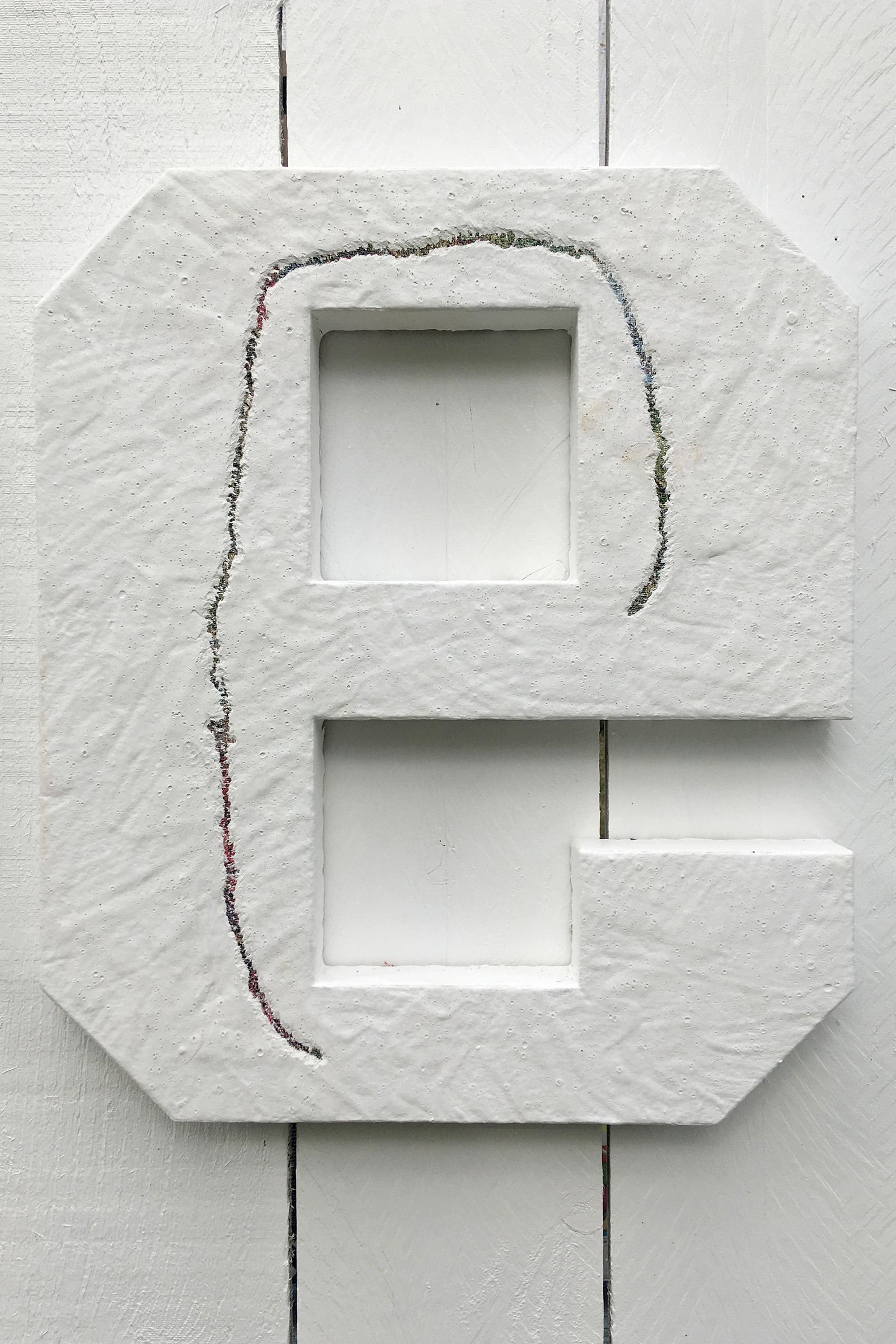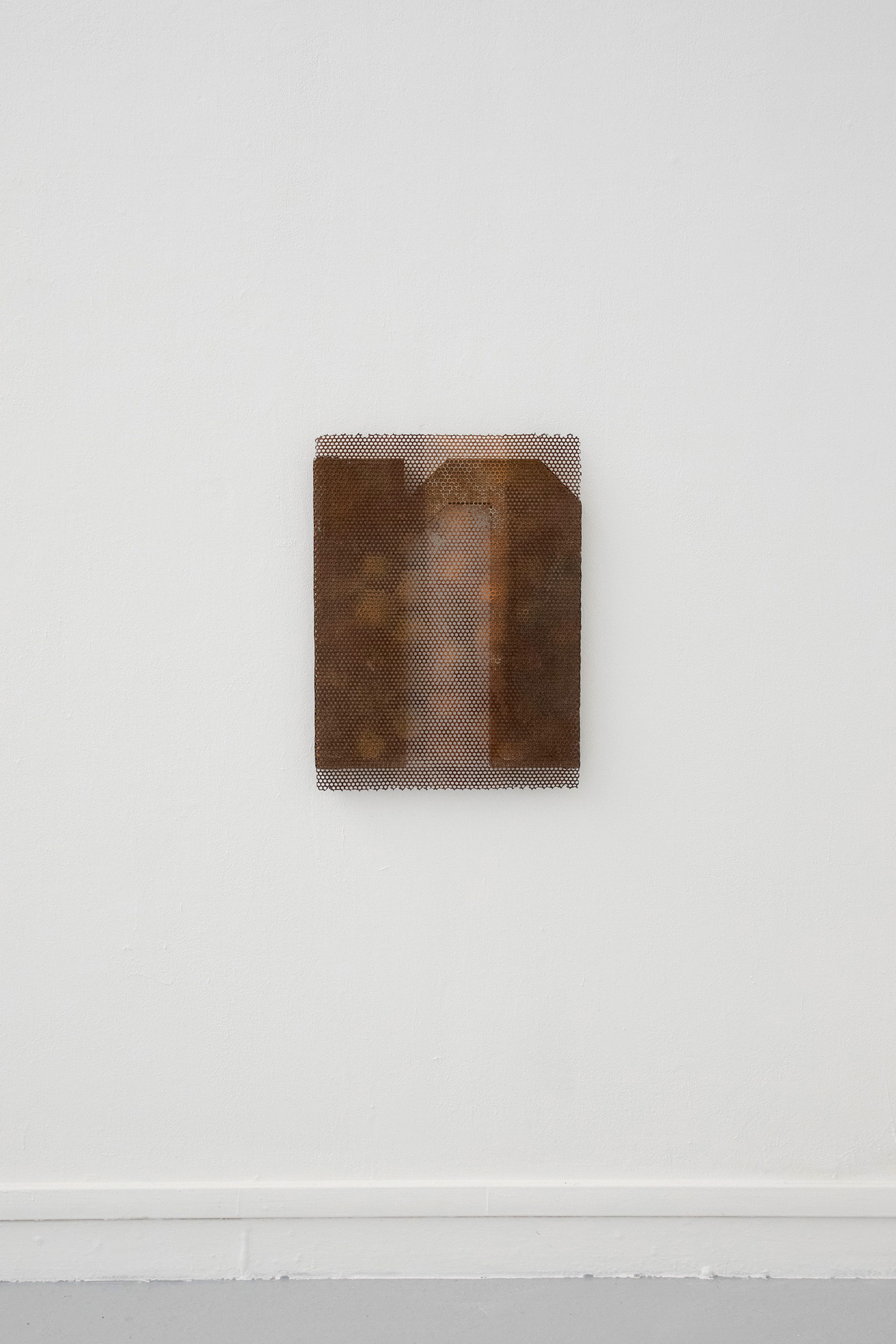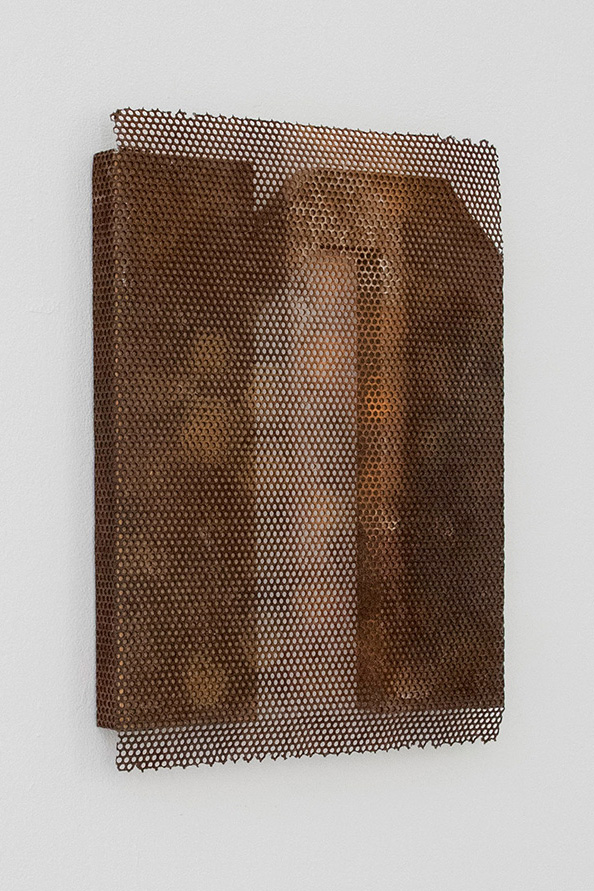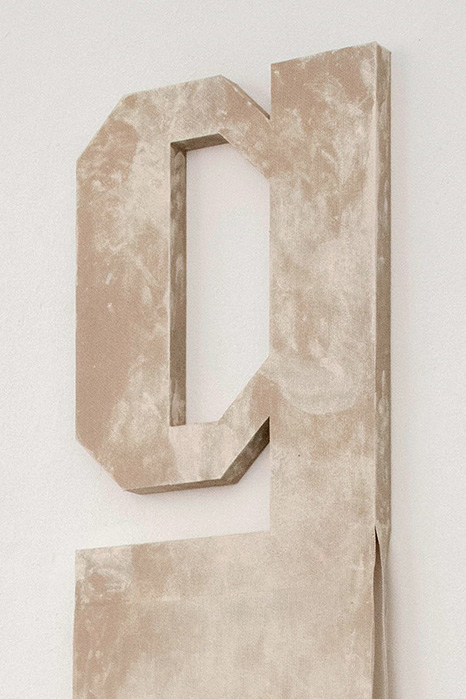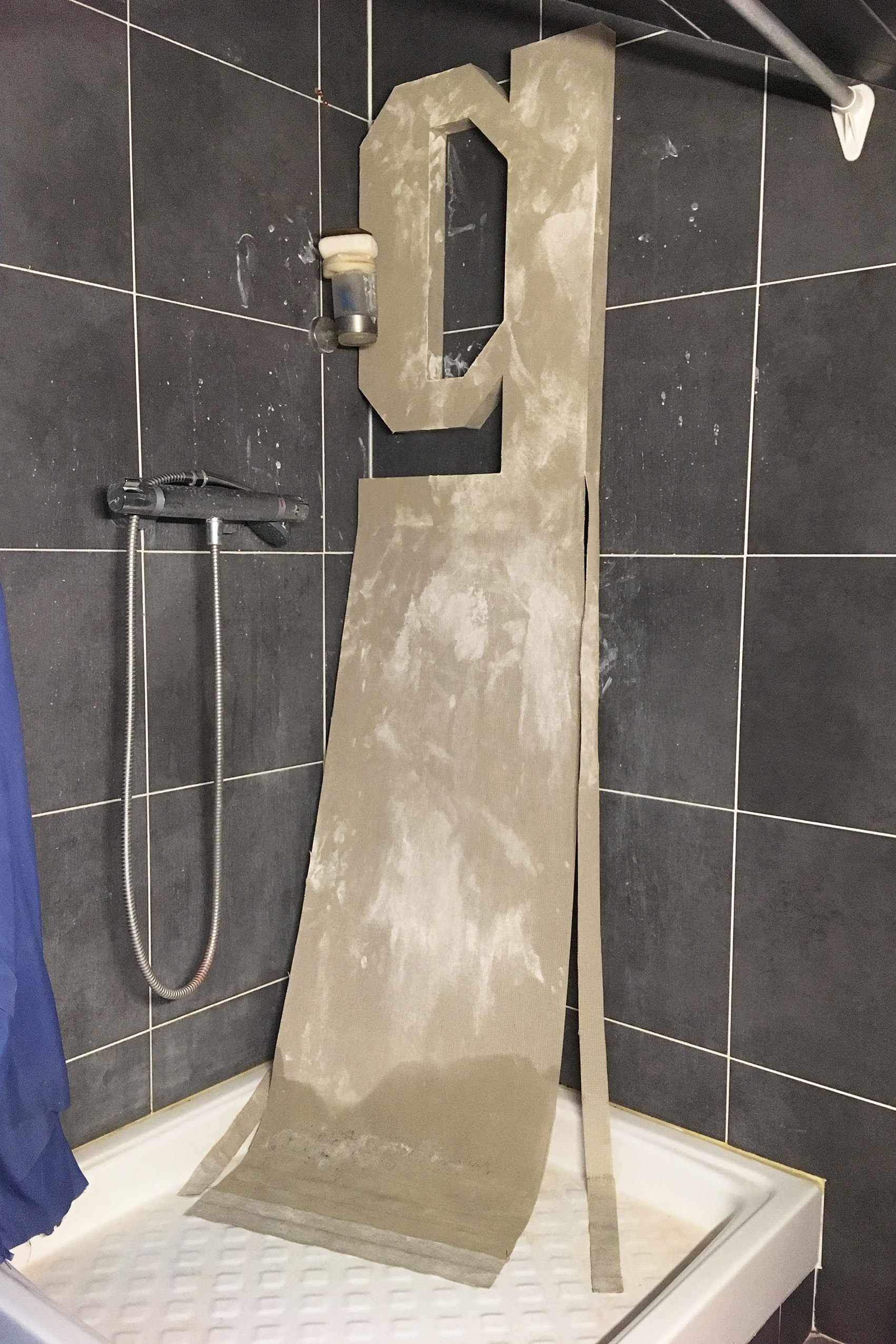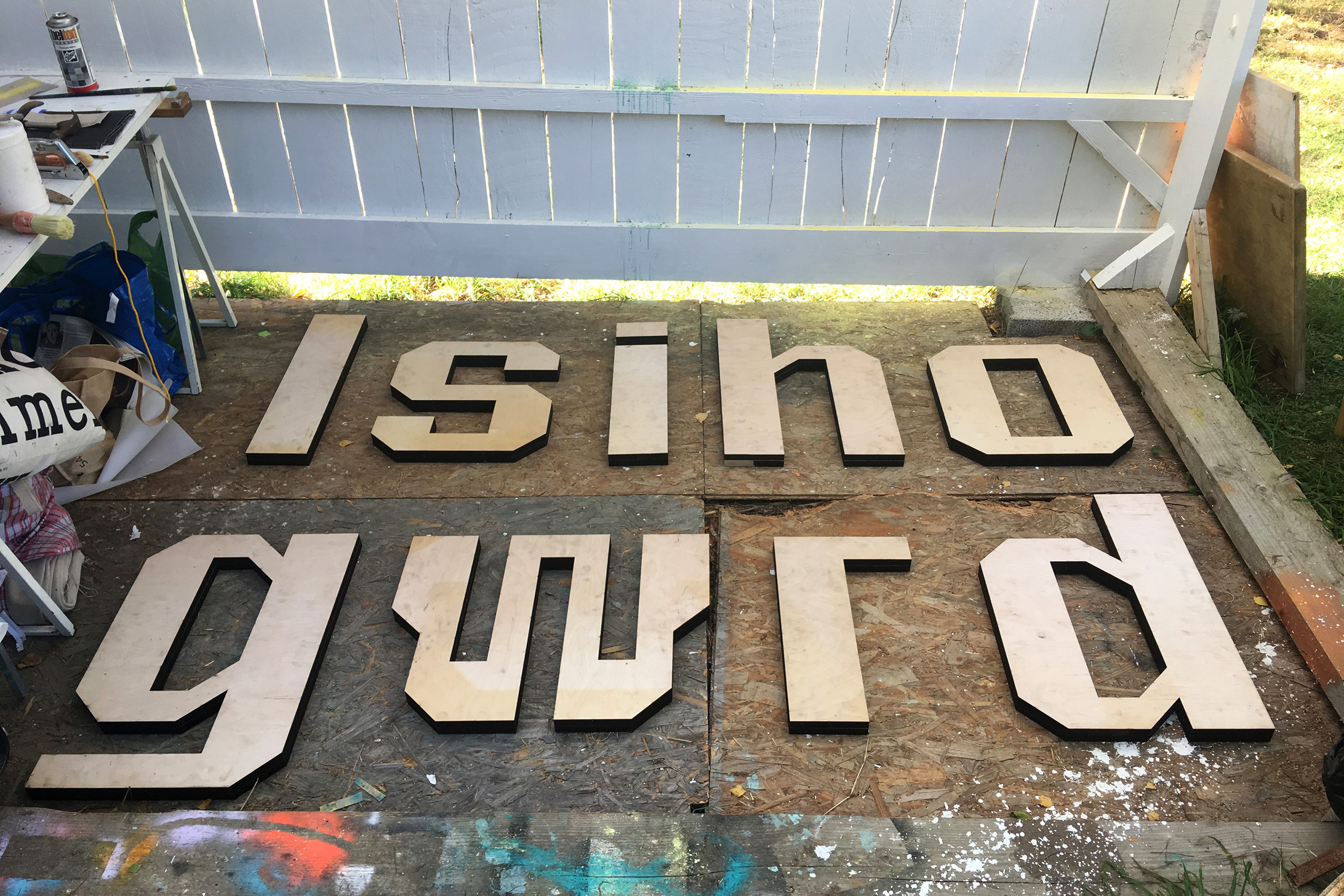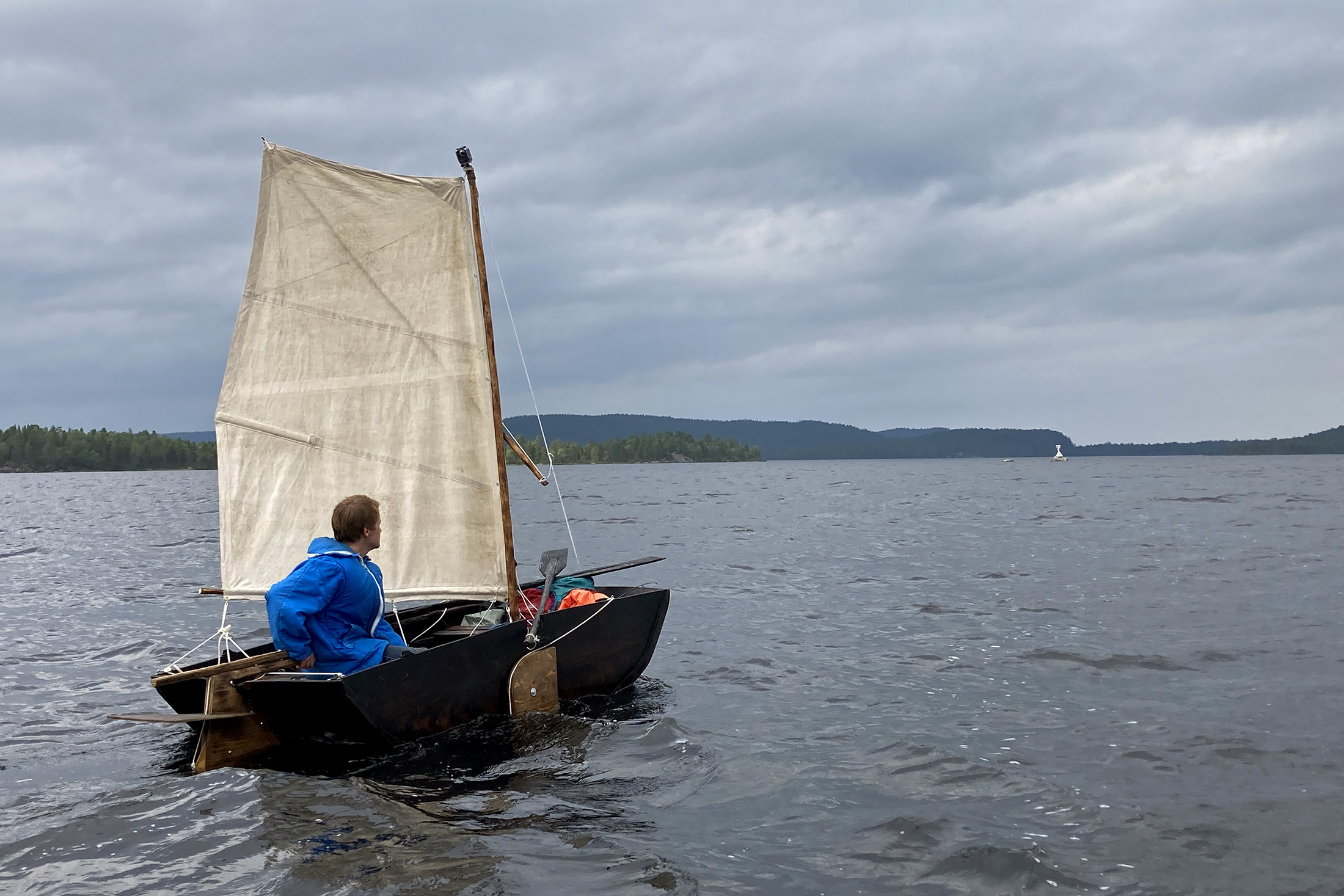
During my time at high school, I spent eight hours of my day sitting on a chair, bent over a textbook. When the school day was over, I returned home and turned on my computer.
I played RuneScape, one of the first free MMORPG games (massively multiplayer online role - playing game). The principle of the game lies in the sort of total autonomy and the competences of the player. In order to eat, one has to go fishing. To heal, pick herbals, plant linen to make ropes, mine and smith ores to be able to craft nails or armors. All these activities offered many possibilities for different actions, which took place on a very large map – the universe of the game. Immersing myself in this game was very time-consuming. Sometimes I used to play for three or even six hours in a row. The world of the game became very important to me, it was almost like a religion, an endless fiction, in which I could take part every day.
For my Bachelor's degree exhibition in École des Beaux-Arts, I turned my gaze back again to this game. I painted two series of paintings in which I studied the social, economical, and political issues known in western society – same of which were also manifested in the game's activities, its visual information, and in the choices and behaviors of the players.
After completing these paintings, I moved on to explore the game’s iconography to create a series of laser cut shaped canvases. While still keeping the same subject of study, I pushed myself further from the initial physical source (in this case the graphic images of the game on my computer’s screen formed by LEDs and pixels). Those images were printed, then drawn, painted, and finally sculpted. It was an evolution of my gestures, which gained new mobility as I distanced myself from the initial position of the inert player, sitting in front of a screen.
It’s finally with the series Otherworldly beings that I pushed these experiments even further.
Otherworldly beings
While playing the game, I cross paths with hooded beings, shrouded in black robes. Their bodies are not visible, they look all the same and gather together in the same place. As I click on them, I discover that they are called Otherworldly beings. I’m surprised, their name strikes me. This game, existing within this code, its norms, and its virtual borders, presents me beings who come from elsewhere, from other worlds. The thought of these two words – otherworldly beings – unfolds a lot of possibilities in me. I thus accept the existence of other worlds and I want to discover them. They are various, it’s not exclusive, there’s no isolated solution anymore, no objectivity. To shatter the borders of the game, means for me to shatter the borders of my practice, my studio, my reason, my education.
That’s why I chose to work outside to create these 18 pieces. Each of them is an investigation of my own limits, learning of new technical skills, making discoveries and understanding situations that were foreign to me. As I come out of my studio, my body gets back in motion and I feel alive. I interact with the nearby environment without any control, engaging in a balanced and unexpected dialogue. I wanted to get rid of aesthetical gestures, rid of the historical and analytical responsibilities of fine arts. I slowly succeeded in regaining vital gestures.
It appeared for the first time while I was showering and washing with clay against the letter g,
I wasn’t painting anymore, I was washing myself. The idea further manifested in using the letter r as a log in my chimney to get warmth, and with the letter e, used first as a fishing net, before a bird built its nest in it while hanged drying on the wall of my outdoor studio. I thus found myself overwhelmed by the processes I had created : Events more alive than my ideas were leaving their marks on the pieces. I understood that my work about Runescape was coming to an end as I had started to reproduce the game’s autonomous gestures in real life.
Each letter is different from others. Without erasing their readability, I let them drift far from their initial shape. As the letters are scattered around the exhibition room, they subvert and question their own significance and also the fragile meaning of the words – otherworldly beings. The letters allow me ways to question the legitimacy of symbolic language, the code which governs our societies. Sending these letters into different environments that transform them, reminds me how living metabolisms form languages and their symbols. It reminds me that writing is in fact natural, it has not been gifted to us by any God. Questioning language makes me think of both its utility and the limits of its functions. Language is fundamental for interaction, but I can’t forget how it depicts only a small part of reality, which is constantly in motion.
Words are jerky and cannot utterly portray our changing environment. The heating water is already warm when described as lukewarm, and it is already boiling when we say it’s warm.
For me, reality should be experienced with all of our senses. I no longer believe in the theoretical and codified apprehending of our environment. It cannot be observed anymore from behind the frames, further separating us from reality, whether it’s a studio, a book, a screen, a fiction.
This is why I’m getting back to motion again, traveling and moving around. When installing my works, I seek to replay this movement. I want to invite the persons discovering the works to remind themselves of the movement, to participate and to experience these creations outside of what has been taught to us : to look without moving, behind the symbols, subjected to the immobility of objects.
o
50×43×4cm. 2020.
Burlap canvas glued on plywood, buried on the ground for four months. Exposed with the chunk of soil under which the letter was buried. The grass sprouted again through the ground in the shape of an O.
t
66×28×4cm. 2020.
Polyester canvas glued on plywood, attached to the top of a fir tree for one year.
Video, making of letter t
h
66×43×4cm. 2020.
Cow skin glued on plywood. Shots of a hunting rifle.
Video, making of letter h
e
Steel wire, 30mn projected video loop. Variable dimensions. 2020.
The letter e was first used as a fishing net to catch shrimps (gammarus) in the Calonne river. When hanging the letter to the wall of my studio, a bird made a nest in it. The letter hosted two broods and I thus couldn’t bring it to the graduation show.
Video, making of letter e
r
50×28×4cm.2020.
Burnt plywood.
Video, making of letter r
w
64×50×4cm. 2019.
Oil on linen glued on plywood, mirrors.
Video, making of letter w
o
50×43×4cm. 2019.
Aerosol paint, polyester canvas glued on plywood, wrapped with tulle.
r
50×28×4cm. 2020.
Glued canvas on plywood, elastic ropes. Thrown from Brotonne's bridge.
l
Variable dimensions. 2020.
Sound piece. Plywood, iron tank, water, car battery, electrical circuit.
Water drops are dripping from the watertank onto a microphone, which amplifies them. The drops create an autonomous polyrhythm. The tank empties in 48 hours and when the pressure gets lower in the tank, the time lapse between the drops increases until they stop completely.
Video, making of letter l
d
66×43×4cm. 2020.
Glued linen canvas on plywood. Borrowed to Sidi for six months.
l
66×14×4cm. 2019.
Mixed technics on plywood.
y
170 × 86× 90cm. 2020.
Polyester canvas glued on plywood, iron box, iron plate, pure pigments.
The iron box collects the colour pigment falling from the letter after having been immersed in it and hanged again against the iron plate.
b
66×43×4cm. 2020.
Jute canvas glued on plywood, stencil. Burnt by sunlight and then in a fireplace. Hanged under the fire alarm system’s wire.
e
50×43×4cm. 2020.
Canvas glued on plywood, gesso, sledgehammer impacts.
i
66×14×4cm. 2020.
Ash on plywood, iron tubes, incense.
Video, making of letter i
n
50×43×4cm. 2019.
Linen canvas glued on plywood. Folded perforated iron plate.
g
220 × 43 × 4cm. 2020.
Polyester canvas glued on plywood, clay. Hanged in shower for two weeks.
s
50×43×4cm. 2020.
Plywood panel cut with a laser.
The only letter, which was left at the cut state of a sculpture. The only visible patterns on it are the traces of my fingers, left while moving it around the many places where the letter has been.
